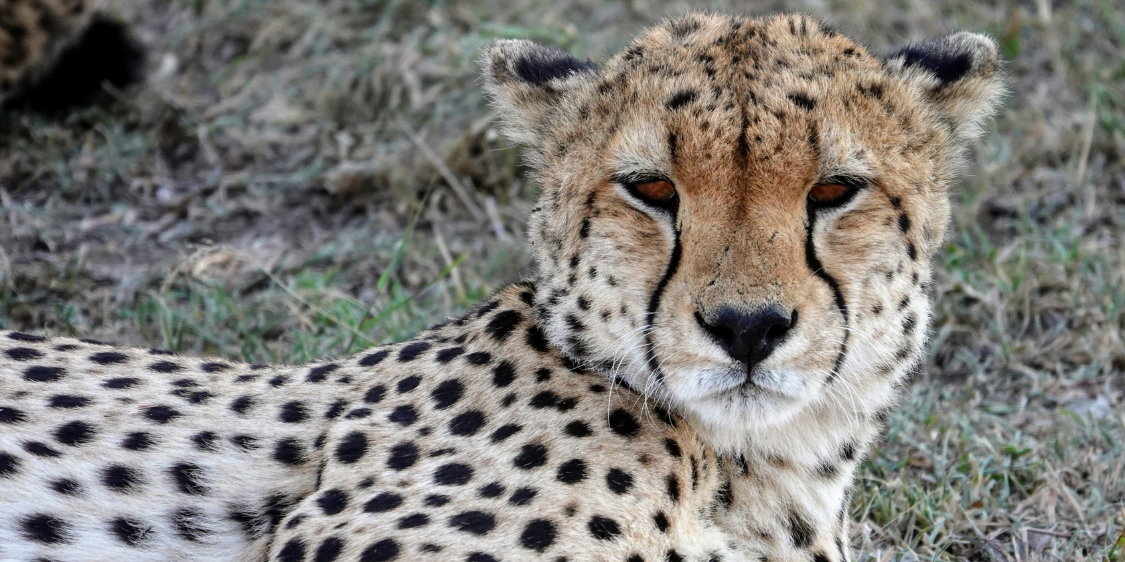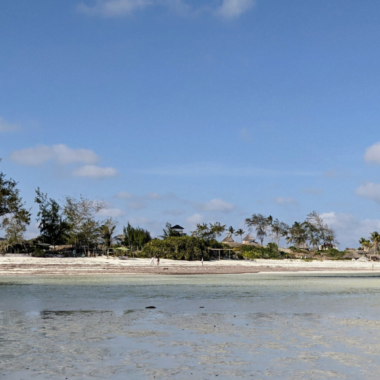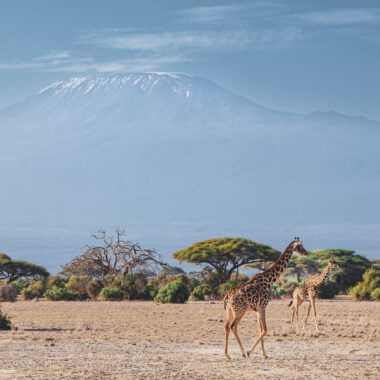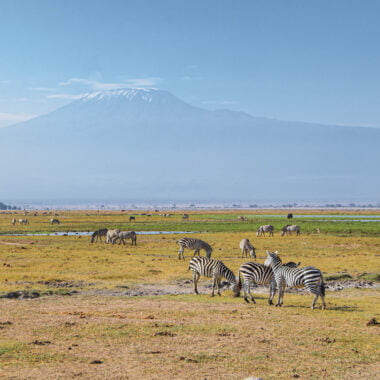Internationally renowned for its abundant wildlife and iconic landscapes, the Masai Mara Reserve stands among Africa’s most breathtaking wildlife reserves. An undisputed destination for safaris, we decided to embark on our very first family safari adventure there…
What does a day on safari in the Masai Mara look like? Did we encounter the Big Five? You will find all the details down below 🦁
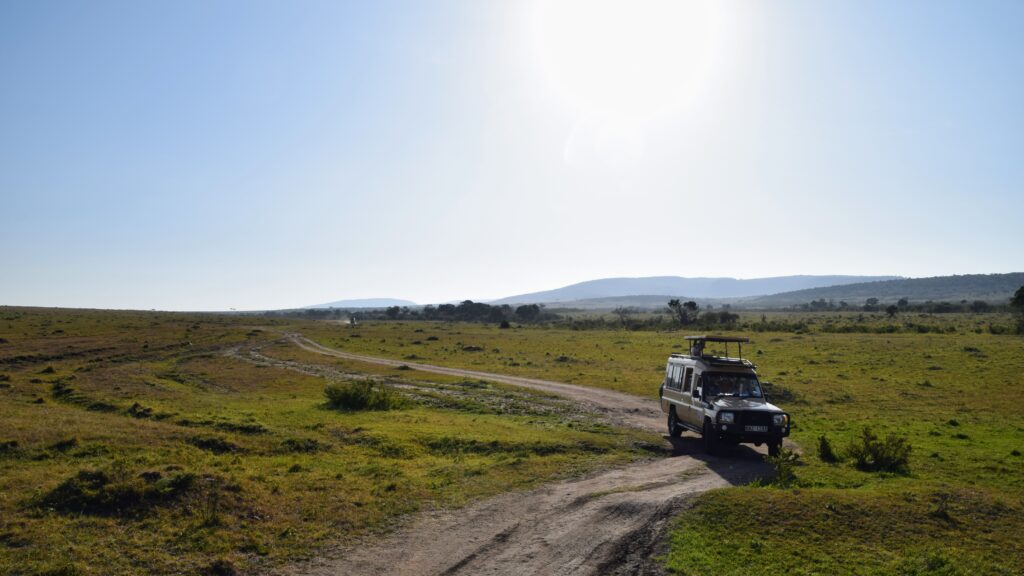
The Masai Mara, in a few words
The Masai Mara is a picturesque highland characterized by undulating terrain ranging from 1500 to 2180 meters. It derives its name from the indigenous tribe residing within its boundaries, namely the Masai people, and the flowing Mara River that meanders through its expanse.
In the Masai language, “mara” translates to “spotted” or “speckled”. Thus, the name “Masai Mara” can be interpreted as “the lands of the Masai in a speckled landscape“, alluding to the scattered patterns formed by acacia trees and thorny bushes, which give the plains a spotted appearance.

Located in southwestern Kenya, seamlessly connected to Tanzania’s renowned Serengeti National Park, the Masai Mara National Reserve forms an integral part of the Serengeti-Mara ecosystem. With a sprawling expanse of over 1,500 km², the Masai Mara Reserve showcases gently rolling hills adorned with vast grassy savannahs and shallow marshland areas. Offering a less crowded experience than its Serengeti counterpart, this majestic haven encapsulates the allure of untamed wilderness.
One of the Masai Mara’s most spectacular attractions is the incredible wildebeest migration. Twice a year, millions of wildebeest, accompanied by zebras and Thomson’s gazelles, traverse the reserve in search of fresh grazing lands. When faced with the daunting task of crossing the Mara River, these herbivores gather in herds, surpassing even 10,000 individuals, hesitating due to the presence of water and the lurking predators that await them.
Which animals can be spotted in the Masai Mara?
With nearly 95 documented mammalian species within its boundaries, the Masai Mara reserve is home to a diverse array of iconic African wildlife:
- the “Big Five” (elephants, lions, leopards, rhinoceros, and buffalos), coined by trophy hunters due to the challenge of hunting them on foot. However, leopards and black rhinoceroses are considerably more elusive to observe…
- gnus and zebras traversing the reserve in search of lush grazing lands during the annual great migration
- giraffes, gracefully munching on acacia trees
- cheetahs, which are becoming increasingly difficult to spot, as there are reportedly only around thirty left in the Masai Mara
- hippopotamuses and crocodiles
- gazelles, antelopes, and other herbivores, such as impalas, topis, kudos, etc.
- over 500 species of birds
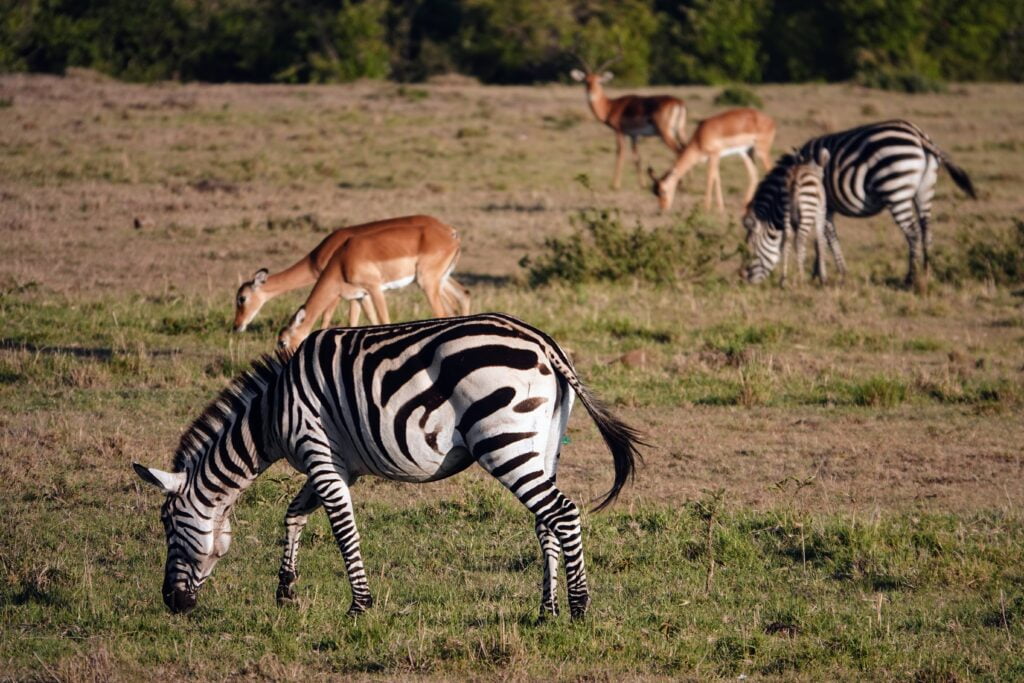
Safari adventure in the Masai Mara
To maximize the chances of observing active wildlife, it’s advisable to begin a safari early in the morning. Just before sunrise, the alarm clock rings, nudging us from slumber. With the first light, the camp comes alive with the melodious symphony of birds and the calls of animals. Although nothing is yet visible, the atmosphere is electric! After hastily devouring breakfast, we ensure we haven’t forgotten anything (binoculars, cameras, water bottles) and embark on our first family safari adventure!
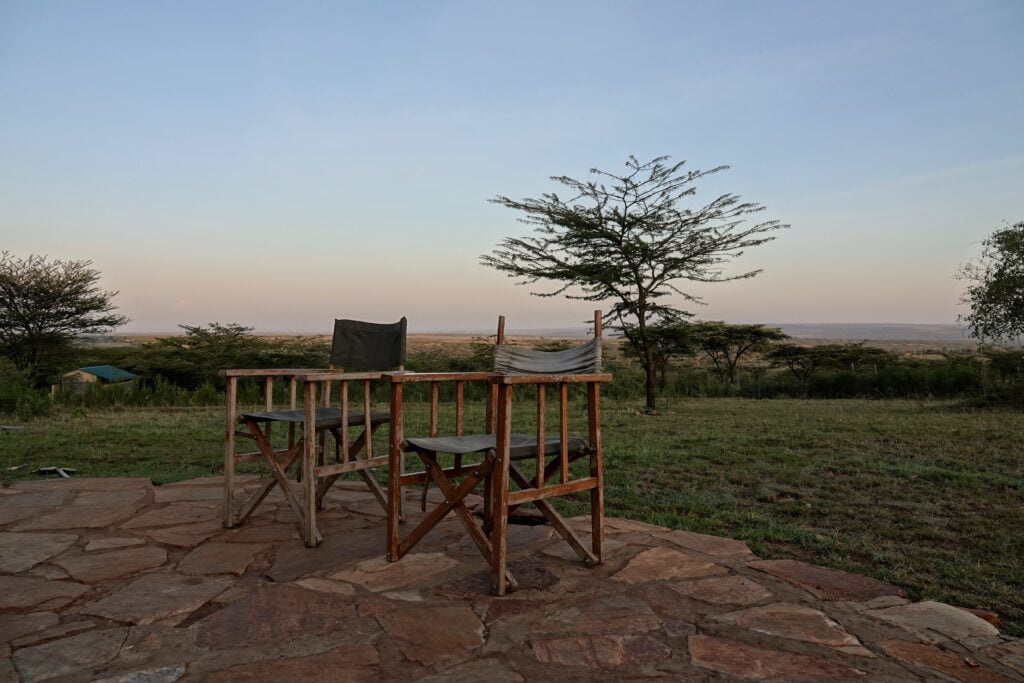

The camp is situated just a few kilometers away from Sekenani Gate. As our drivers handle the entrance fees, several Masai women gracefully approach our vehicles, offering to sell their beautifully crafted necklaces, bracelets, and other delightful souvenirs.
The reserve gates open, and as we step onto the trail, we are greeted by many animals. Just a few meters away, zebras, wildebeests, and impalas enjoy lunch. Amongst the trees, the giraffes gracefully indulge in their feast.
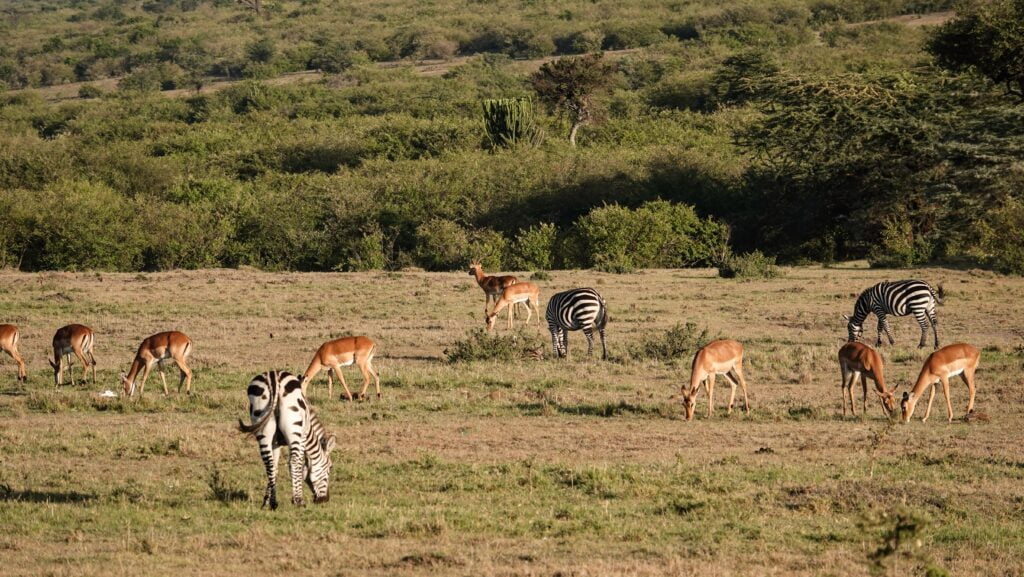
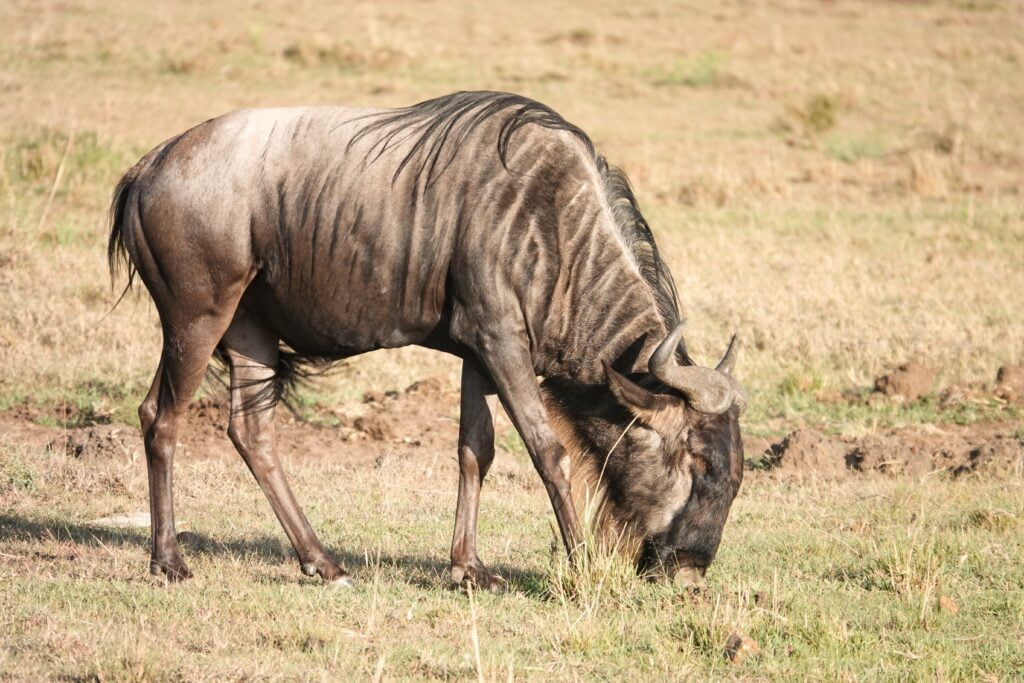
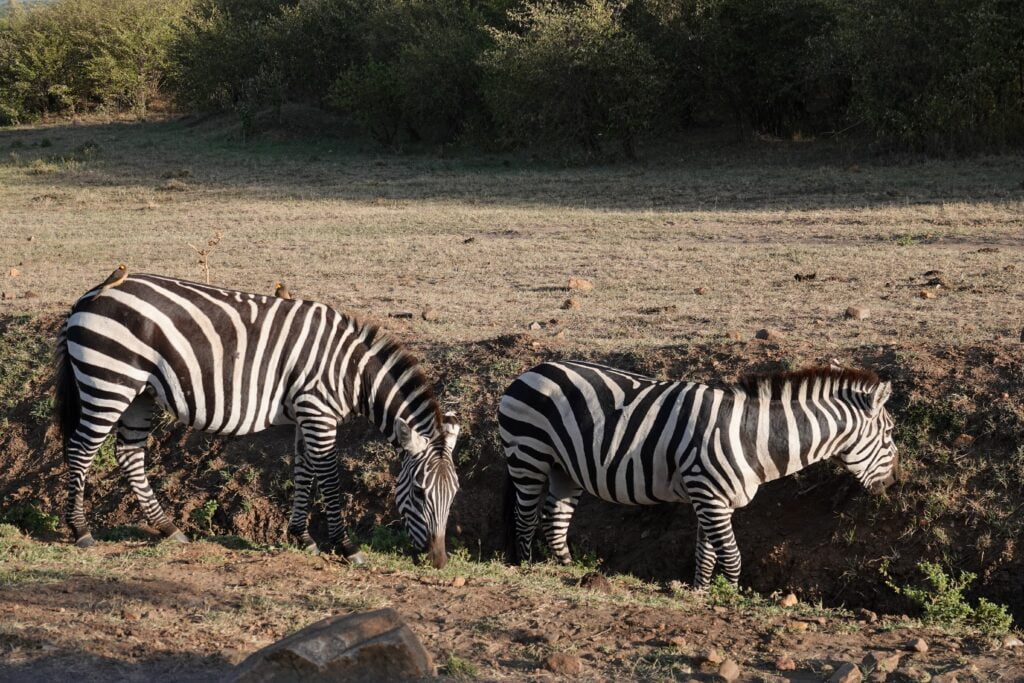

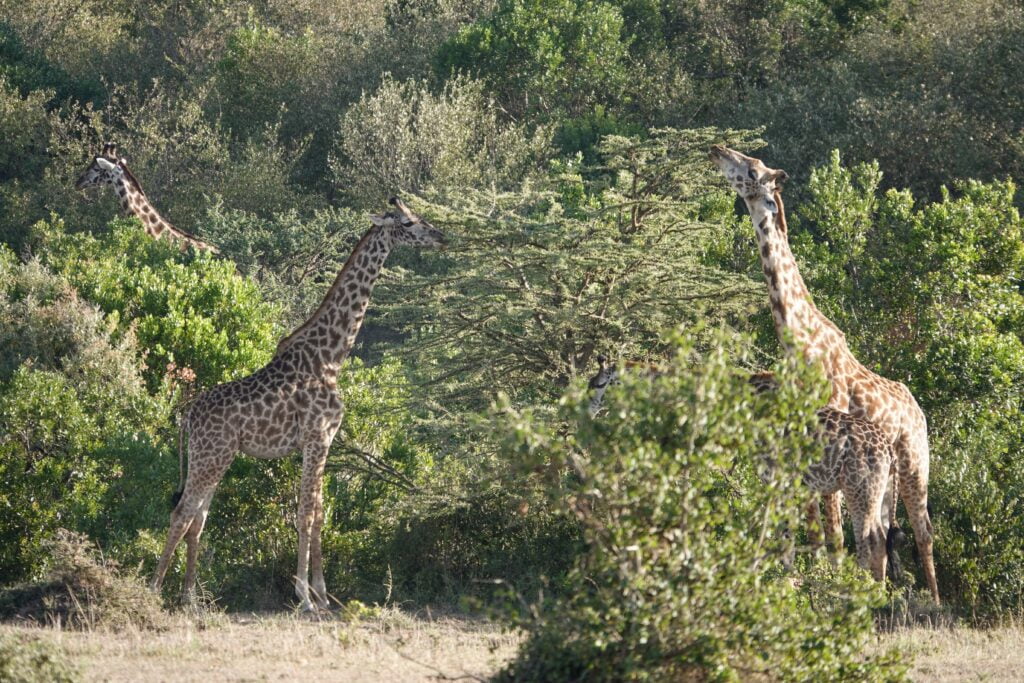
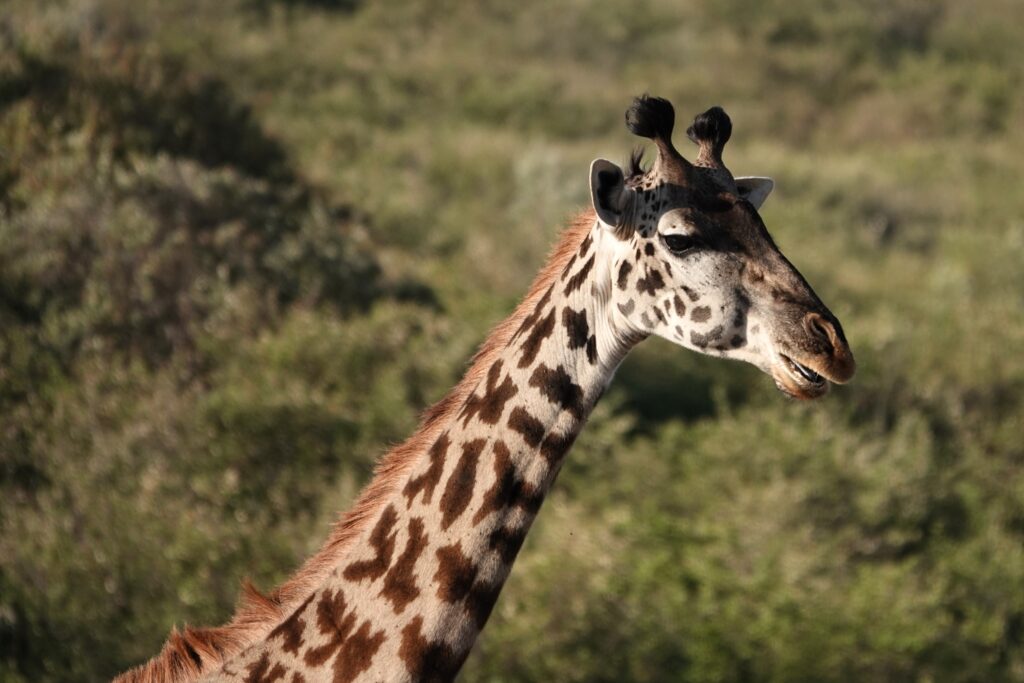
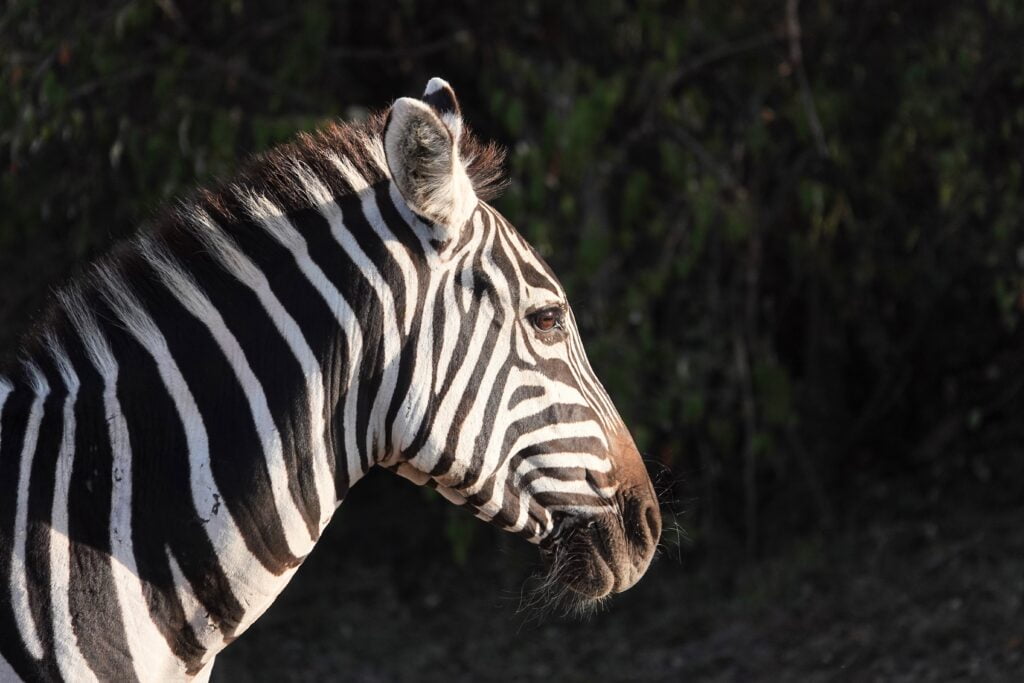
Our guide provides us with insights into the wildlife that surrounds us. He diligently observes signs of animal presence and fresh tracks and communicates with other guides to determine our next destination. As we traverse the plains, we immerse ourselves in the breathtaking beauty and vastness of the landscapes that stretch as far as the eye can see.
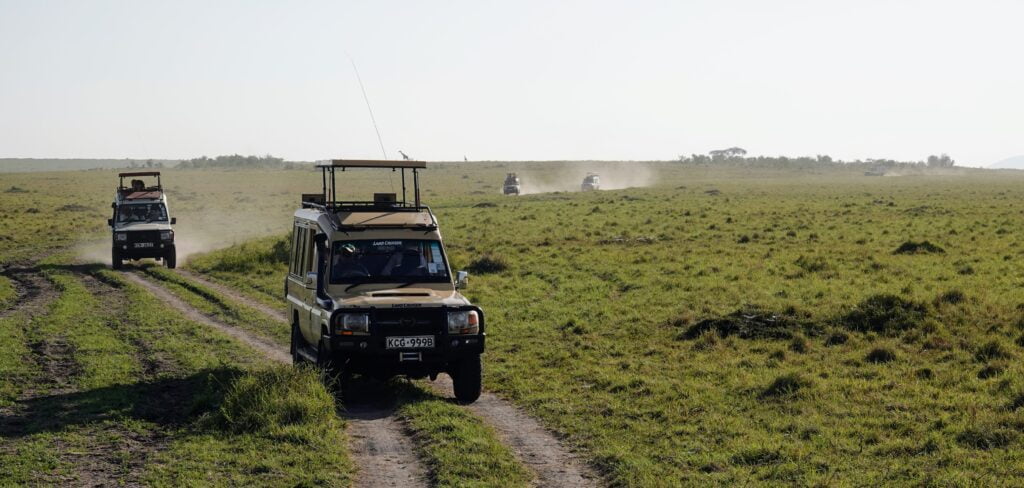
When multiple voices resonate on the radio, excitement levels escalate in the car. The congregation of vehicles leaves no doubt: there is something to observe! After gathering information, it turns out a leopard is hiding with its prey at the base of a tree, deep in a small ravine.
Several drivers go above and beyond, disregarding the usual guidelines (no more than 5 cars near an animal, a minimum distance of 25 meters). The outcome: no one sees anything, and the animal hides even deeper 😒
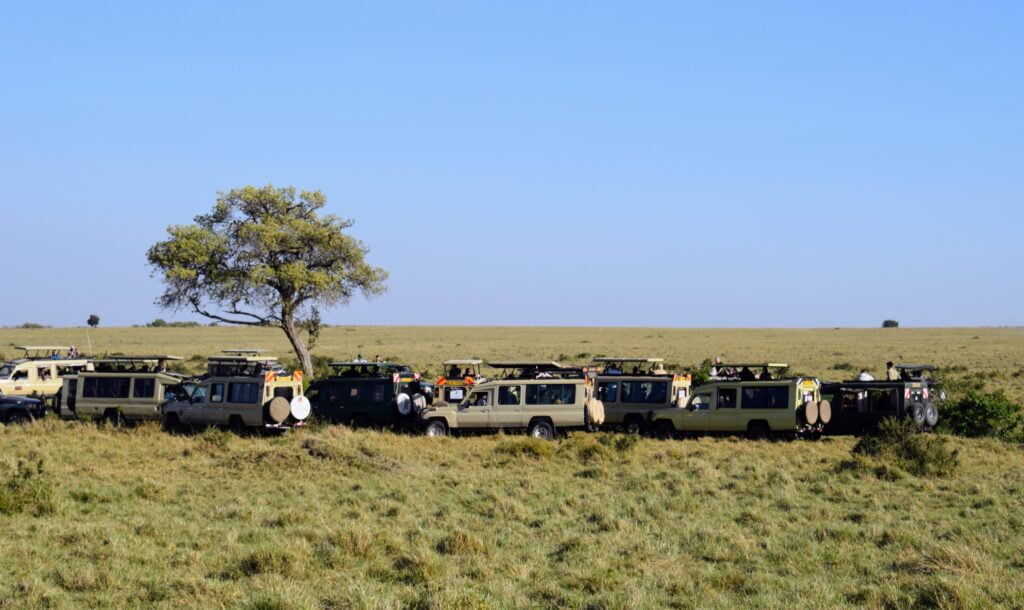
The vehicles start to disperse as two hyenas emerge behind us…
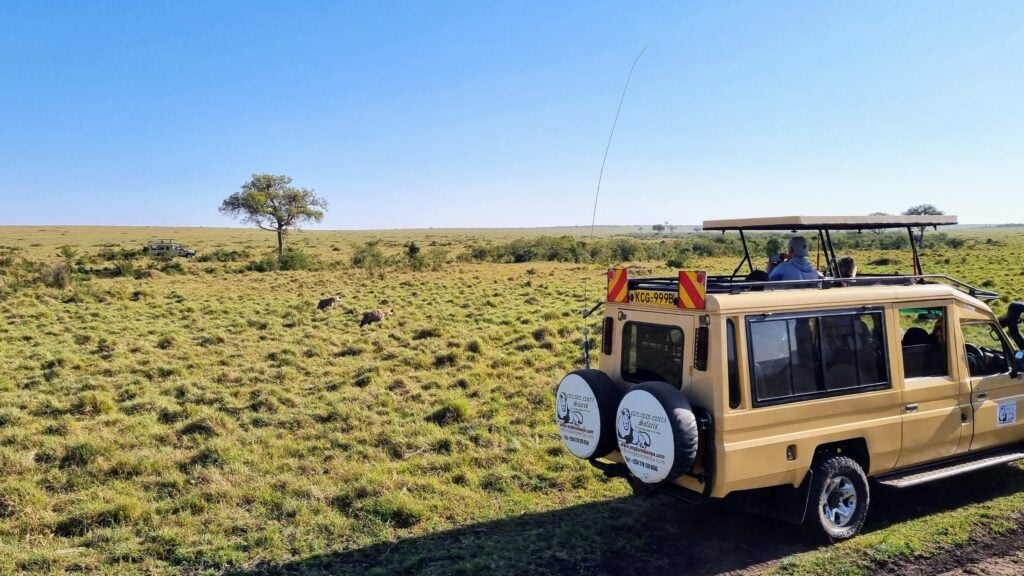
Captivated by the leopard’s prey, the hyenas leave him no choice but to flee, relinquishing his meal. An apparition of spotted elegance swiftly emerges from the bush. Although the photo may be blurry, the memory it captures remains vividly real. 🐆
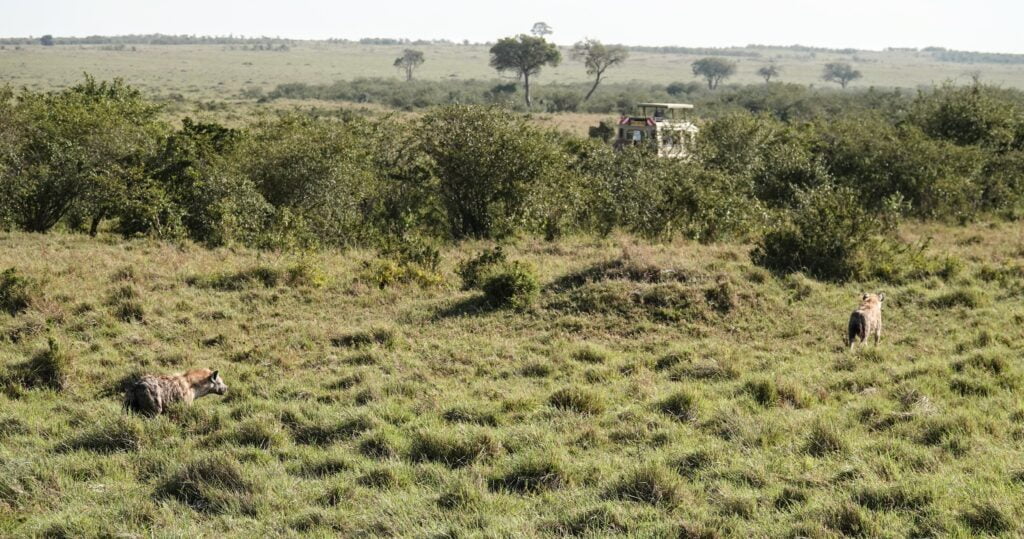

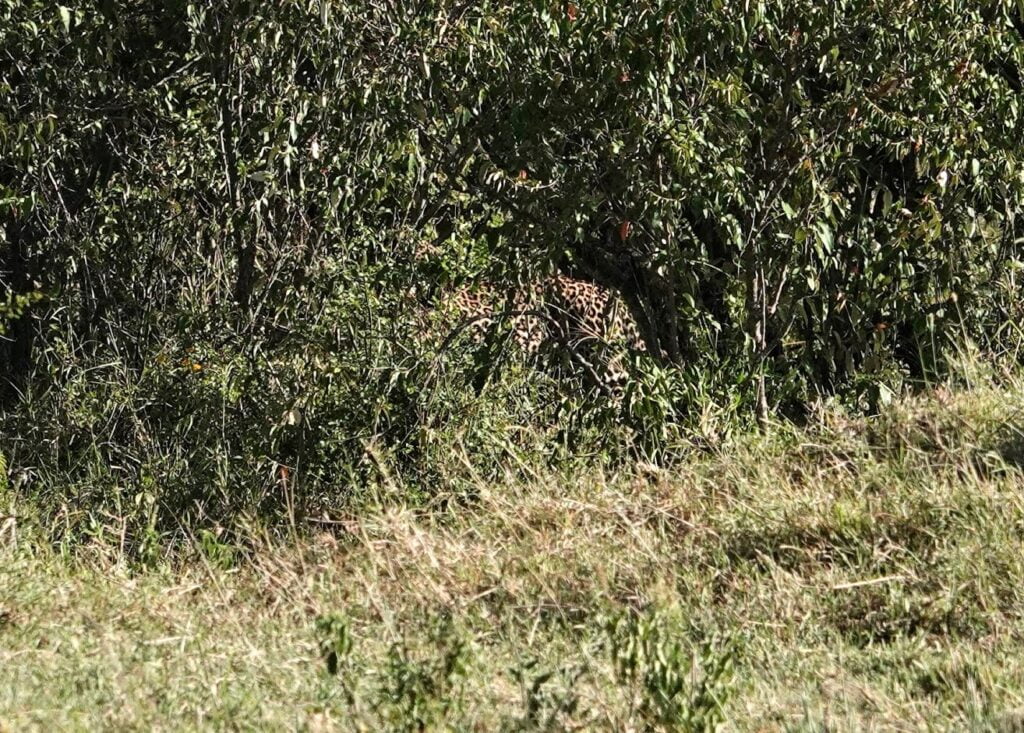
This time, we know we won’t see the leopard again. As we part ways with the hyenas indulging in their feast, we forge ahead with our exploration, eager to uncover new adventures.
Not far away, two other felines await us, lazily lounging in the shade of a tree. Several cars are once again present, but they keep their distance due to the cheetahs’ inactivity. Although we would have loved to witness the world’s fastest animal hunting a gazelle instead of napping, the moment remains truly magical 🤩
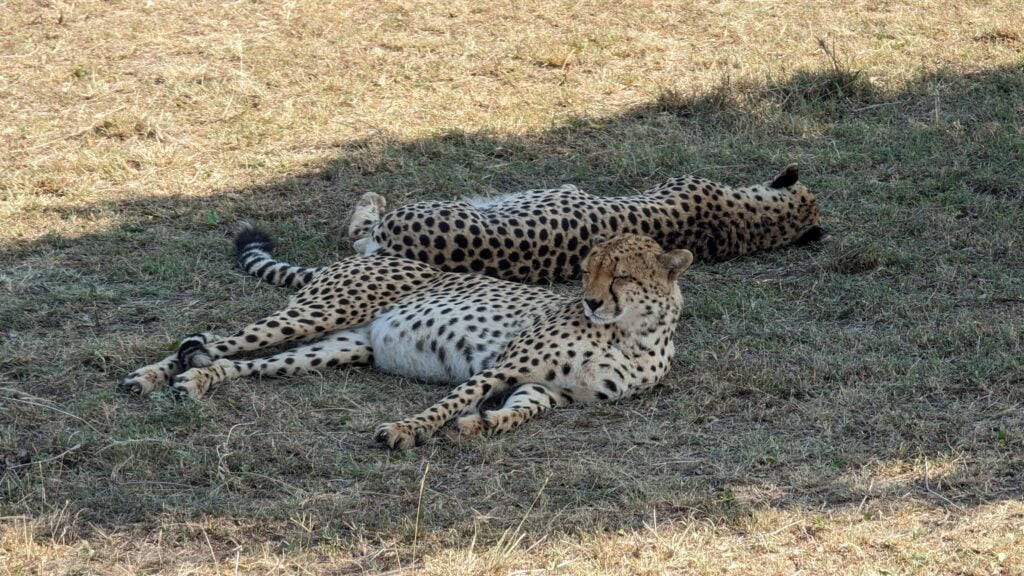
We are privileged to witness the sole surviving pair from the legendary Tano Bora. Derived from Swahili, “Tano Bora” symbolises the extraordinary alliance of five male cheetahs in the Masai Mara, renowned for their magnificence.
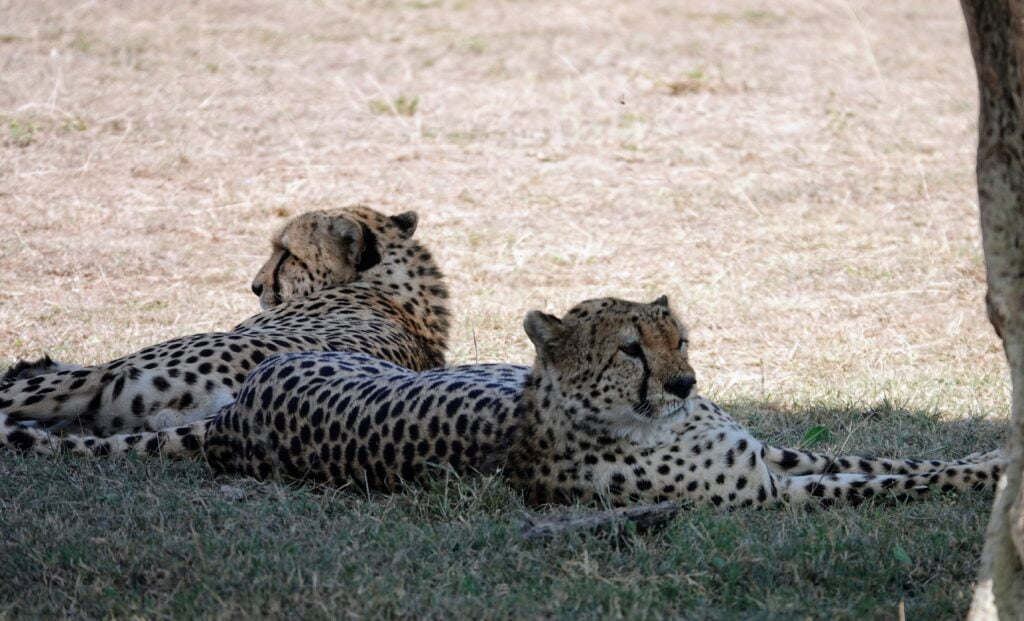

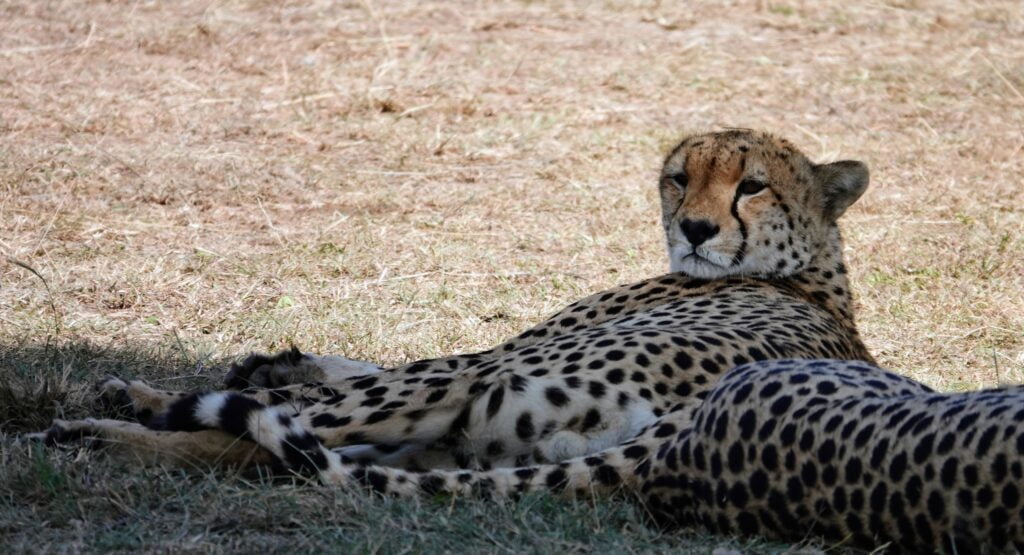
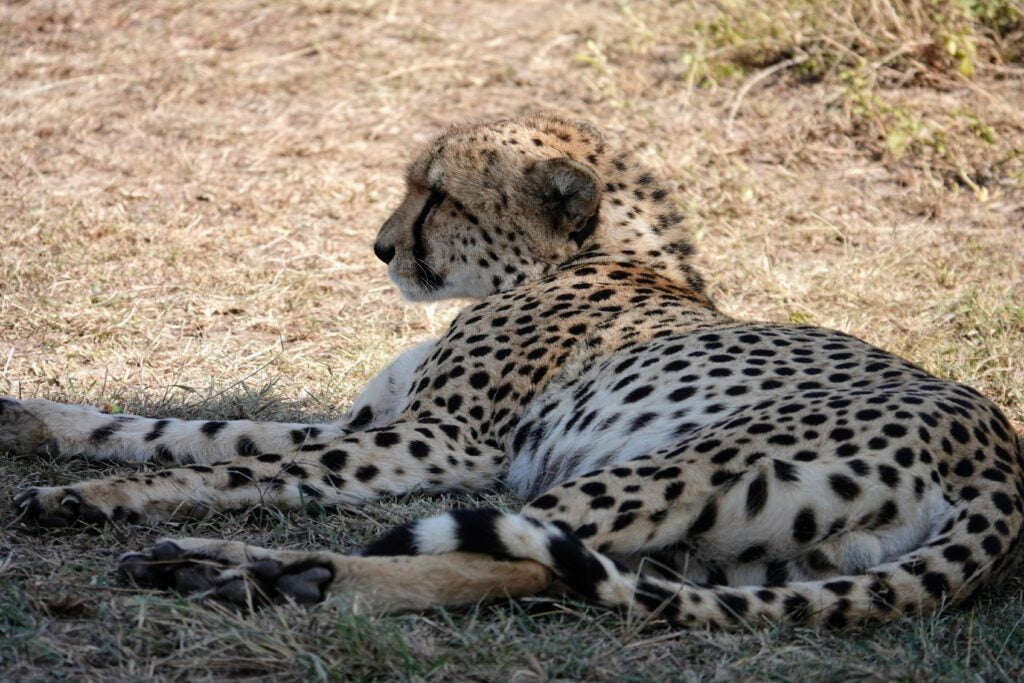
Indeed, male cheetahs are solitary animals. While they may sometimes form coalitions to defend a territorial area better, these social groups rarely exceed two or three individuals from the same litter. The Tano Bora coalition, consisting of two pairs of brothers from different families and a solitary cheetah, was exceptional.
For three years, Olpadan, the loner, led the coalition, organizing hunts that allowed them to tackle prey up to ten times their size. In 2019, he was attacked by his peers and received medical treatment from veterinarians before rejoining the coalition at the bottom of the hierarchy. He left multiple times, only to return… until he was ultimately excluded in 2021. In early 2022, he was found dead, bearing the marks of several bites, presumably inflicted by his former allies. A month later, Olarishani, another member of the coalition, disappeared. Then a third. The two remaining survivors appear calm before us, and yet …

While driving around a hill, we come across two majestic buffaloes.
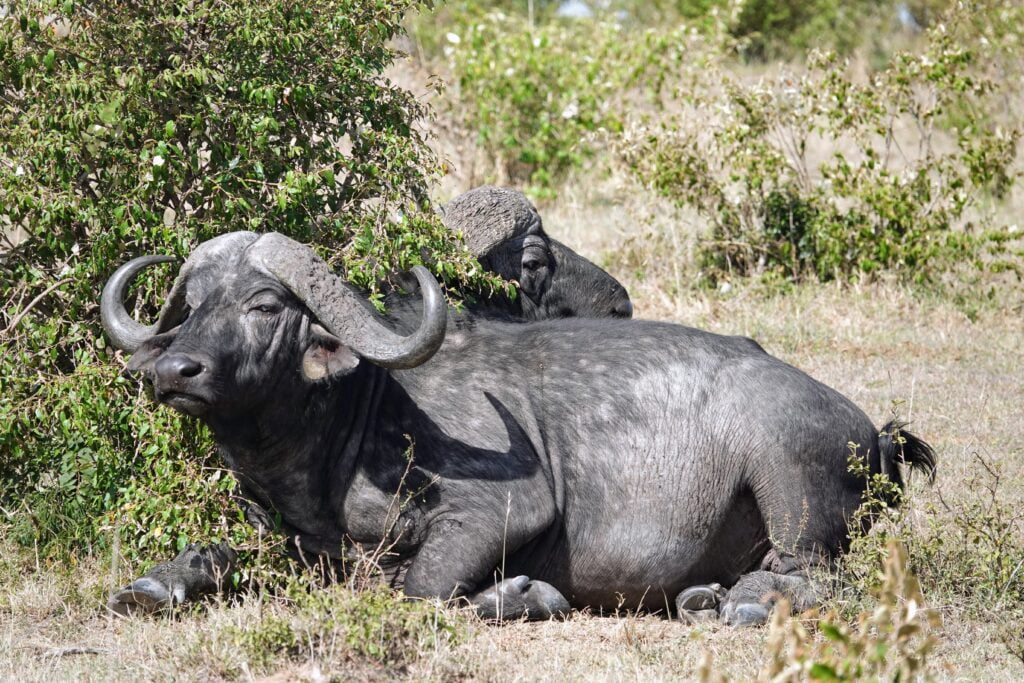
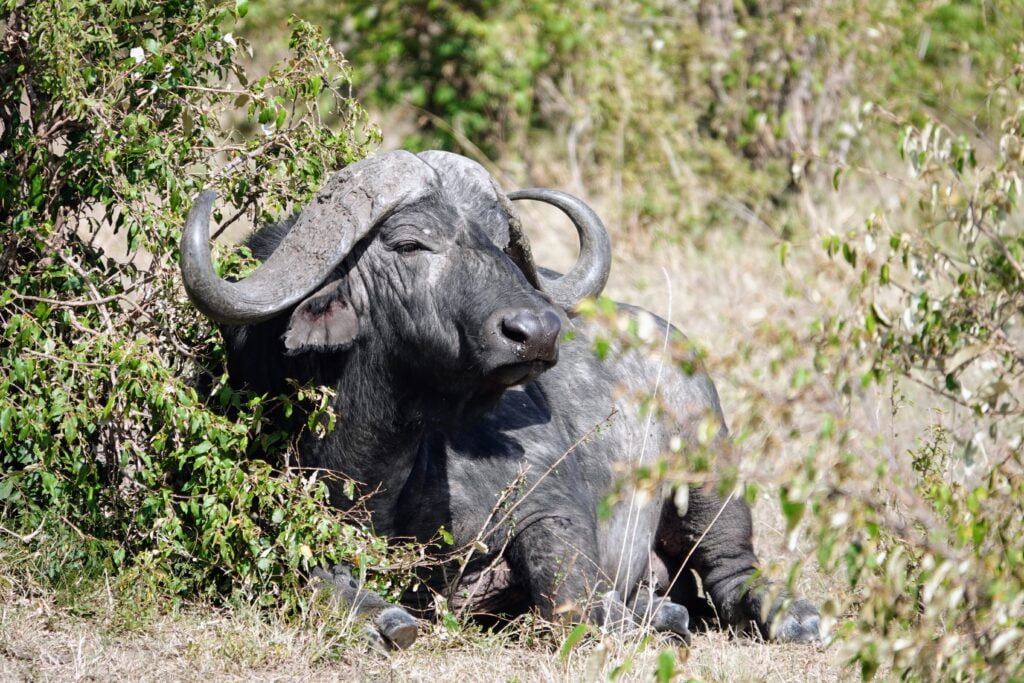
And then, finally, our first lions! Hidden in thick bushes, they can barely be seen… We’re searching for a majestic Simba-like mane, but they all seem young. We can’t help but feel a bit disappointed, but their sight is truly awe-inspiring 🦁

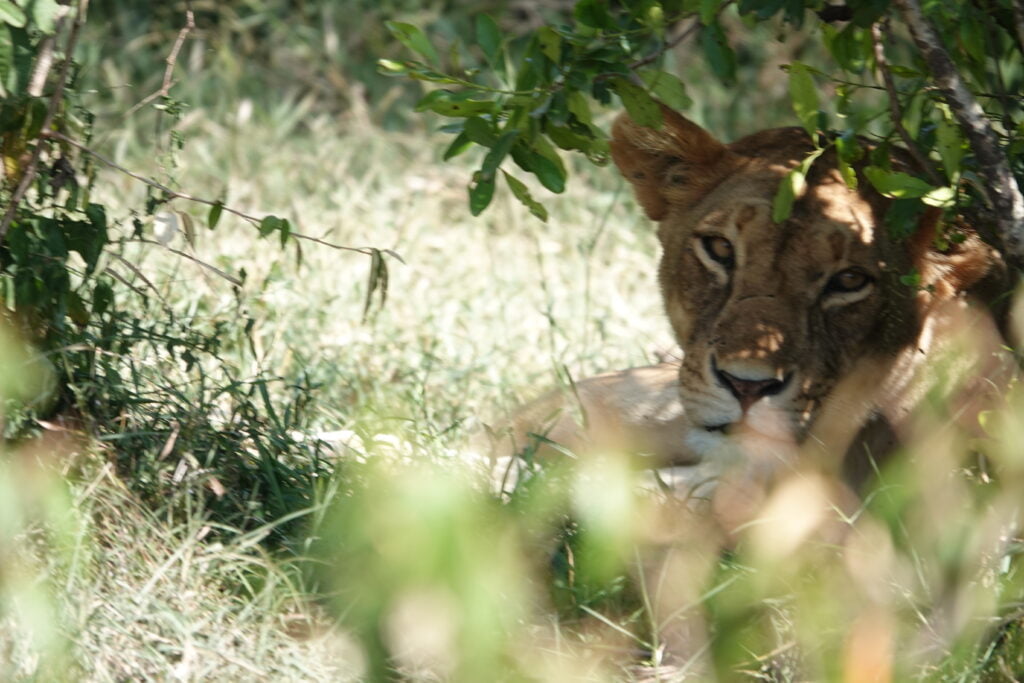
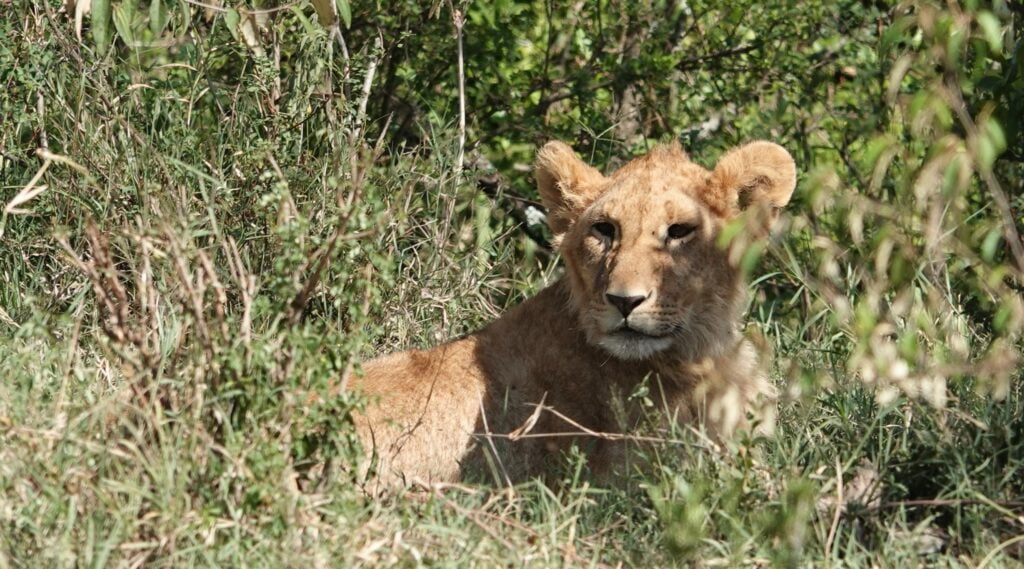
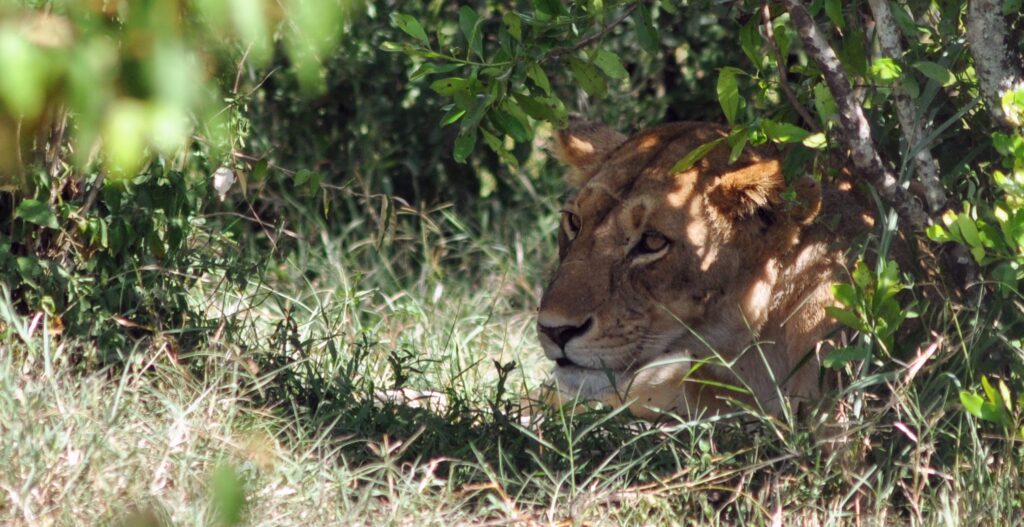
Crossing a dried-up watercourse can be quite nerve-wracking, not to mention the occasional bruised arms 😅
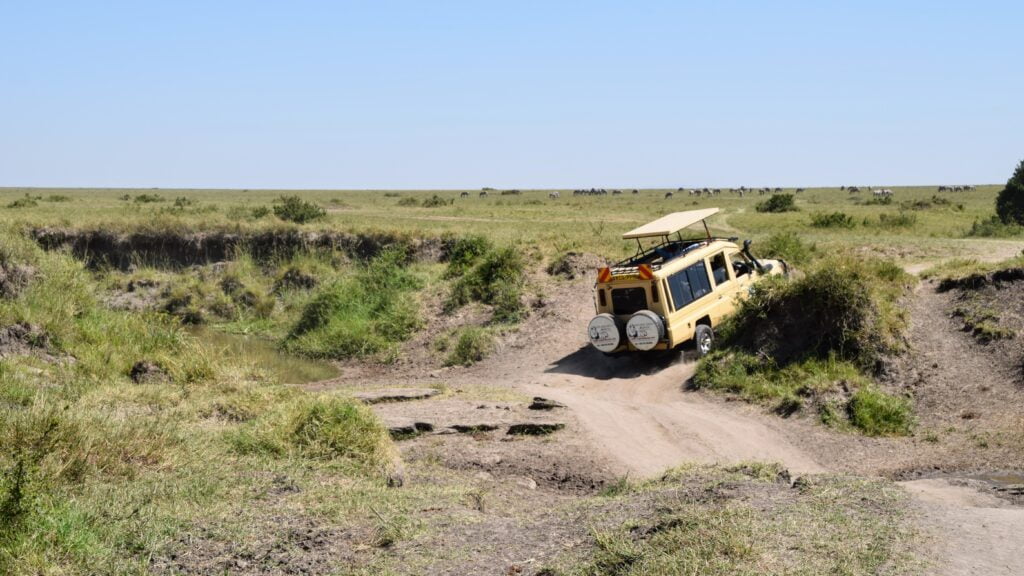
Approaching a herd of zebras, two individuals catch the eye with their restless behavior. At first glance, it may seem like a playful interaction, but it is a dispute. It is difficult to determine whether it is a matter of hierarchy or territoriality. However, one thing is clear: the confrontational movements and intimidation tactics are anything but friendly. From kicks and shoves to bites on the neck, they refuse to back down 😅


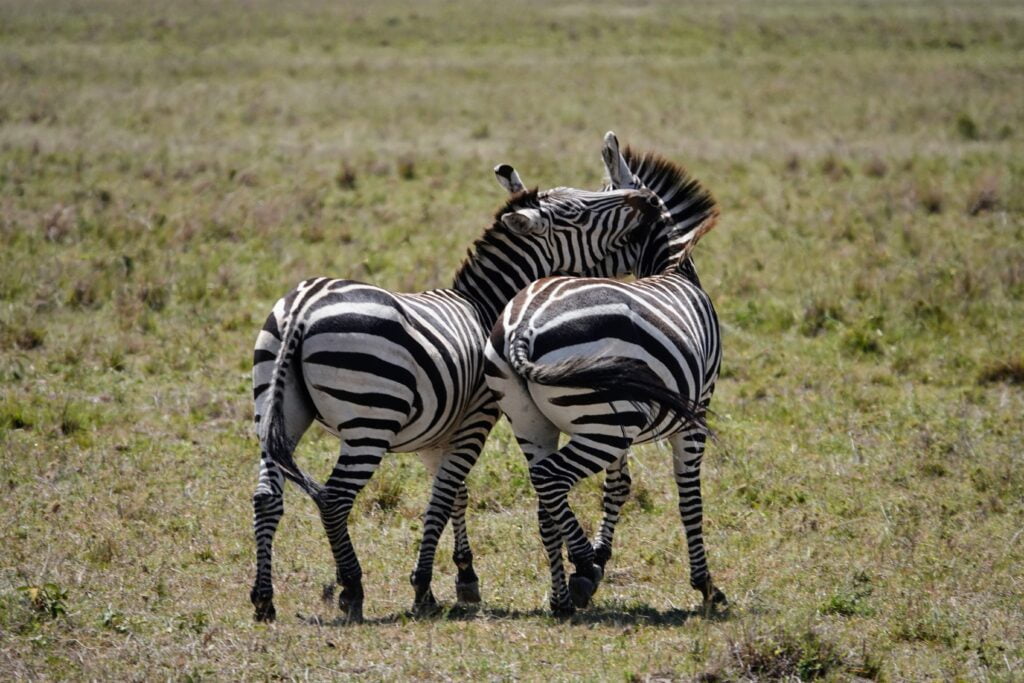
Not far from the two rivals, a family of elephants boldly indulges in a delightful feast without a care in the world.
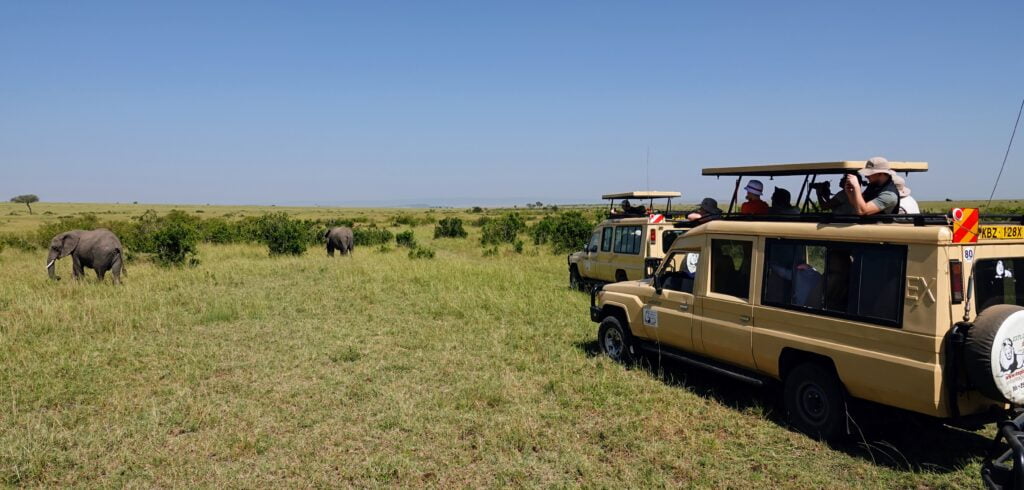
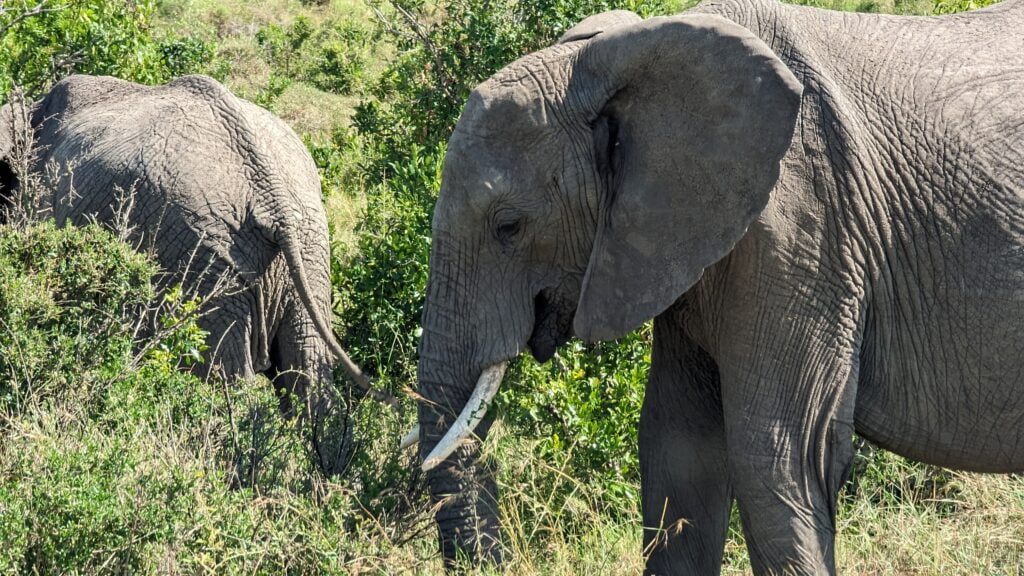
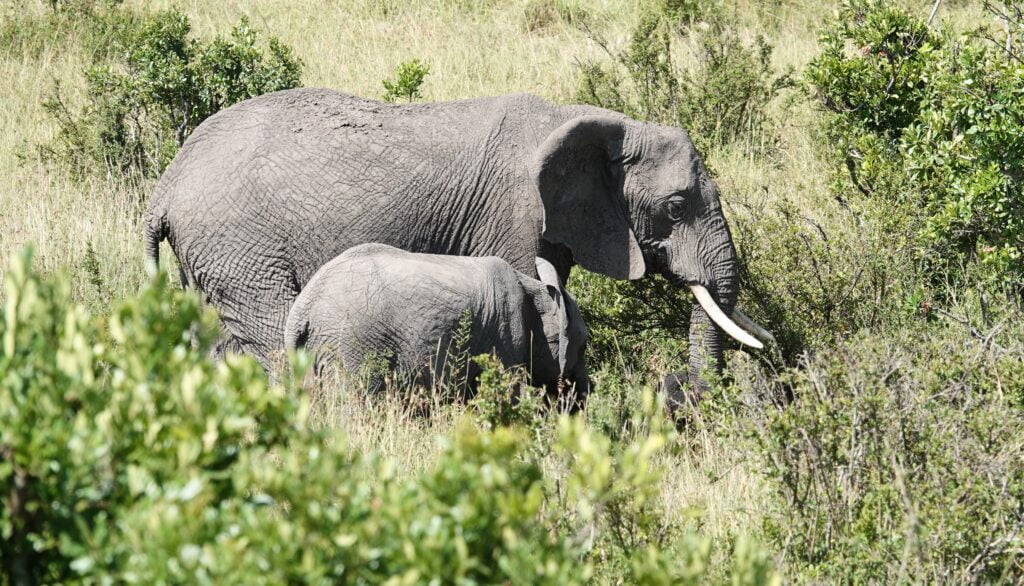
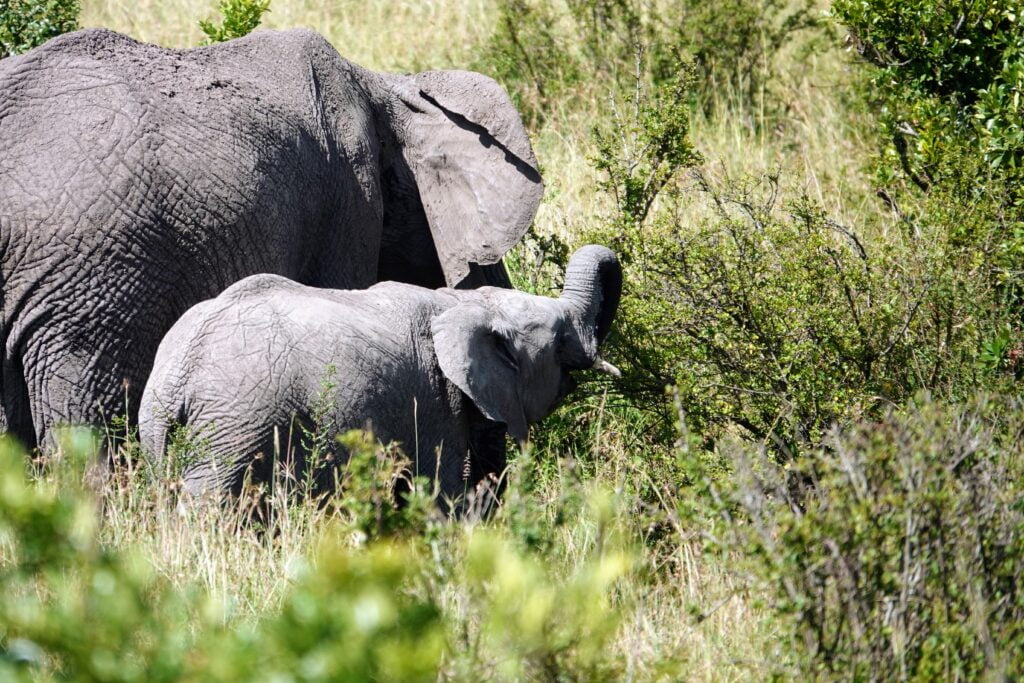
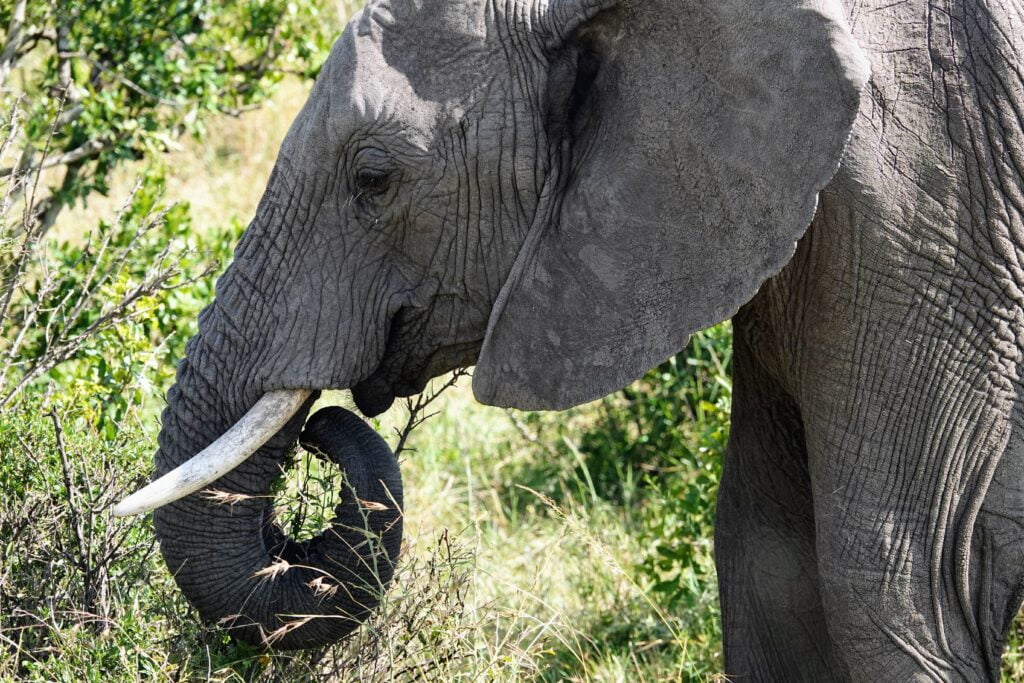
Even in the car, several stomachs start to rumble. However, our guide suggests one final stop before returning to the campsite for the midday meal.
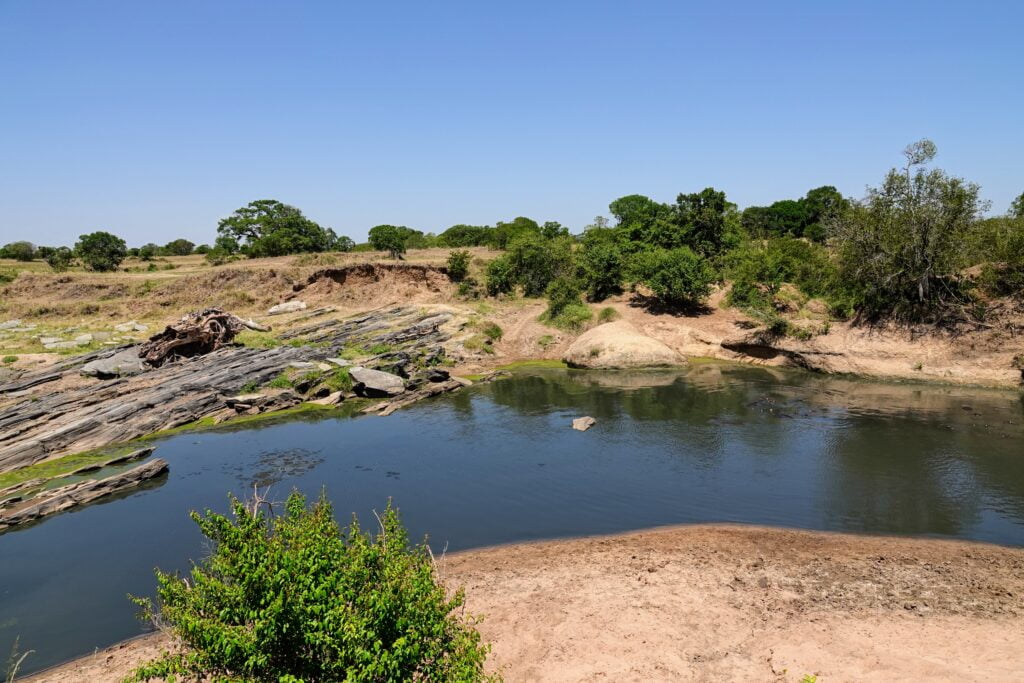
Here we are on the banks of the Talek River, overlooking a herd of hippos. In the day’s blistering heat, the chances of witnessing these semi-aquatic animals emerge from the water are slim. Thus, we patiently observe them at rest, with their eyes, ears, and nostrils protruding. A few trumpeting sounds can be heard, but no signs of an imminent battle exist. False alarm …
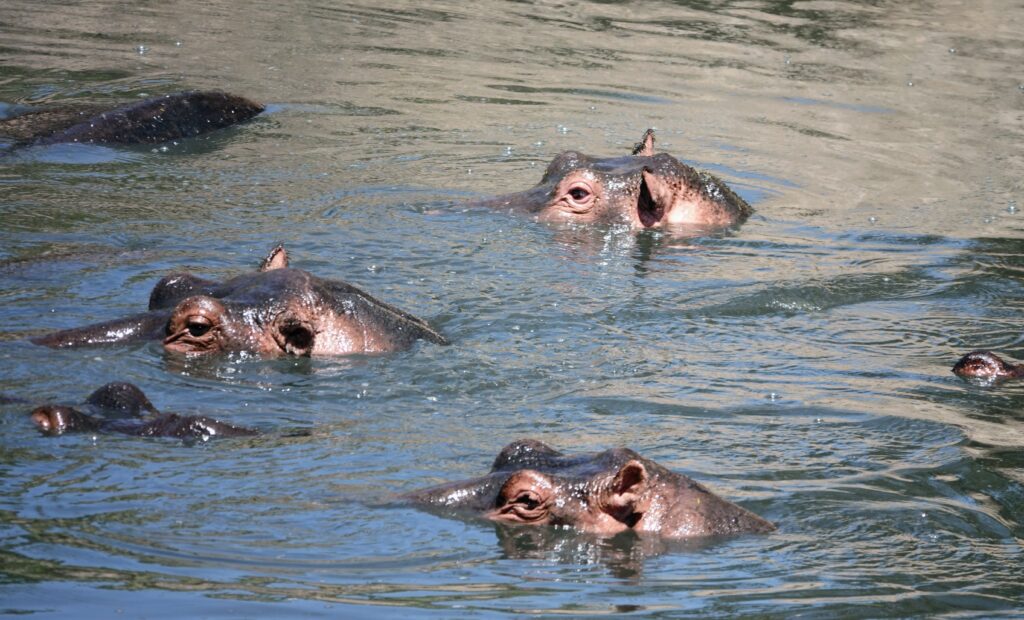
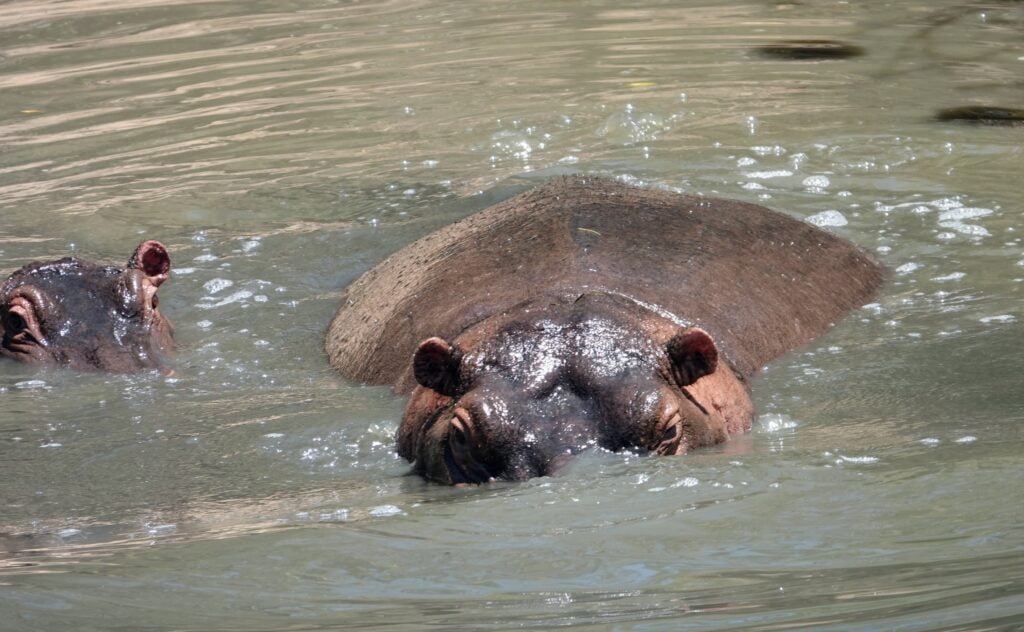
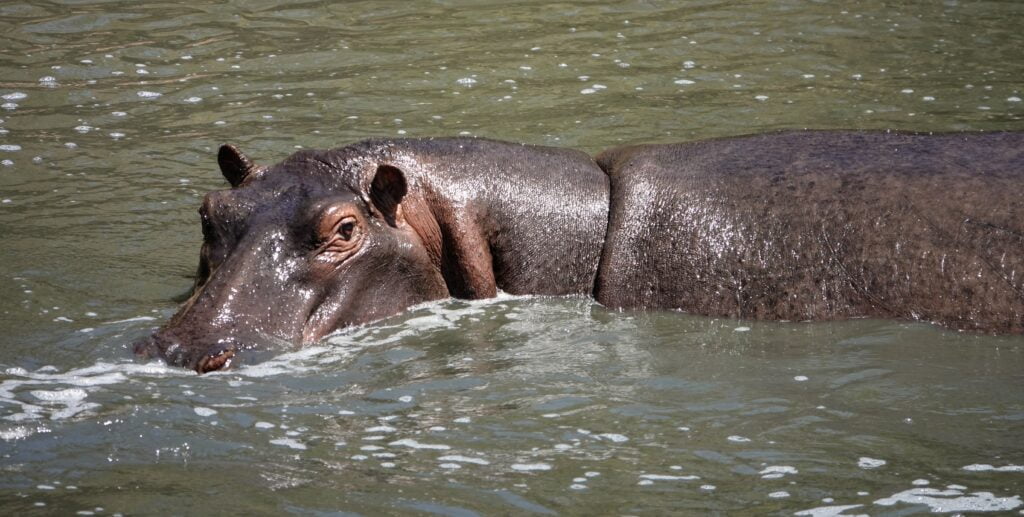
After a satisfying lunch and a delightful afternoon siesta, we hop back into the car for another exhilarating game drive in the Masai Mara Reserve. Our agenda for this afternoon is to search for majestic lions amidst the rugged terrain. At least, that’s what we hope for 😅
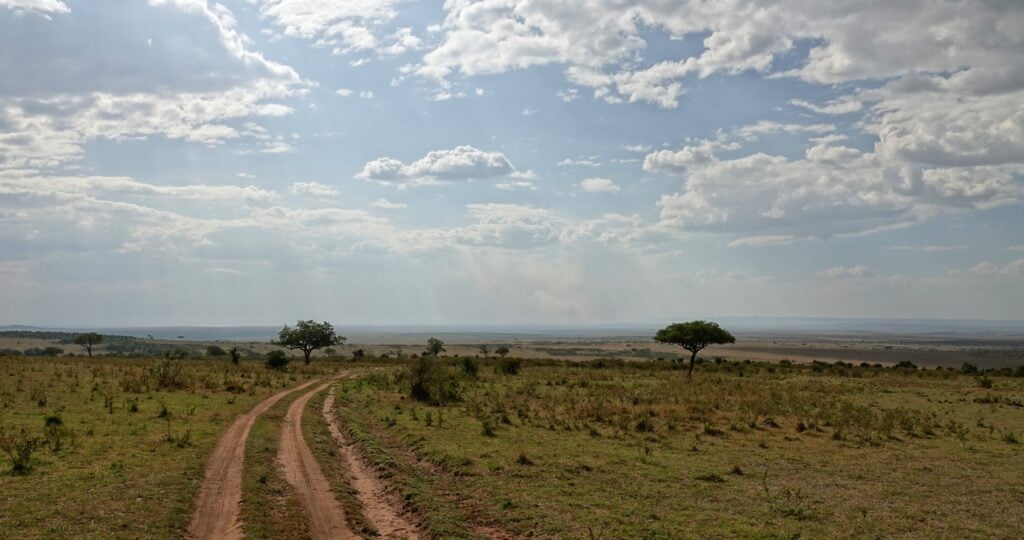
In the hills, herbivores are less abundant or more challenging to spot. One might encounter the occasional giraffe, a few aged buffalos, or a splendid zebra…
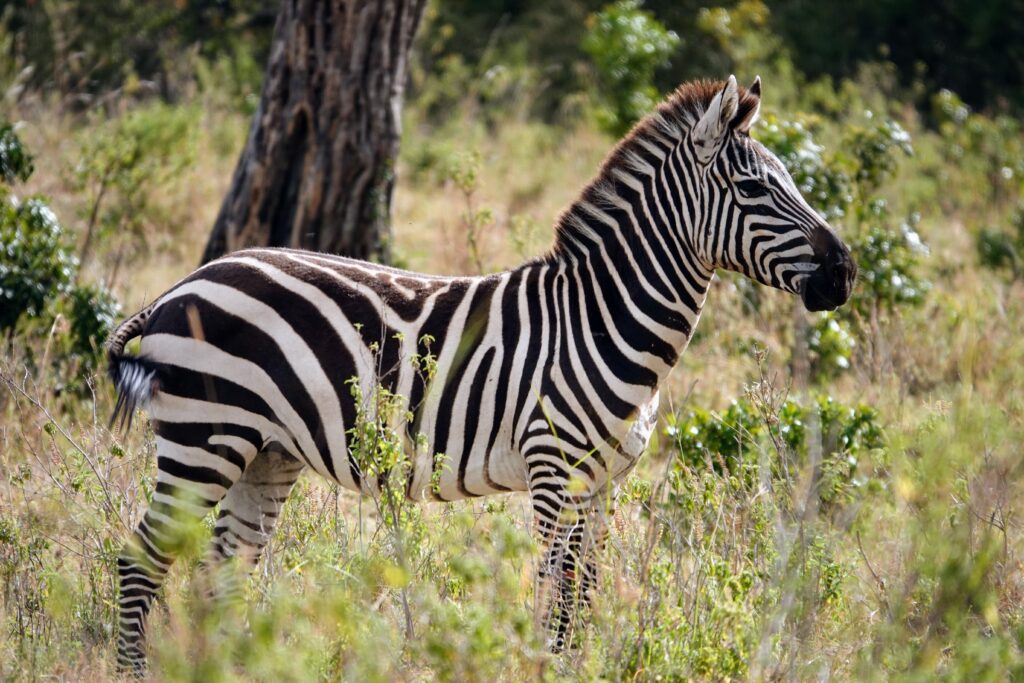
Time passes, turning stormy. With fewer animals to observe, it feels long, especially for the children …
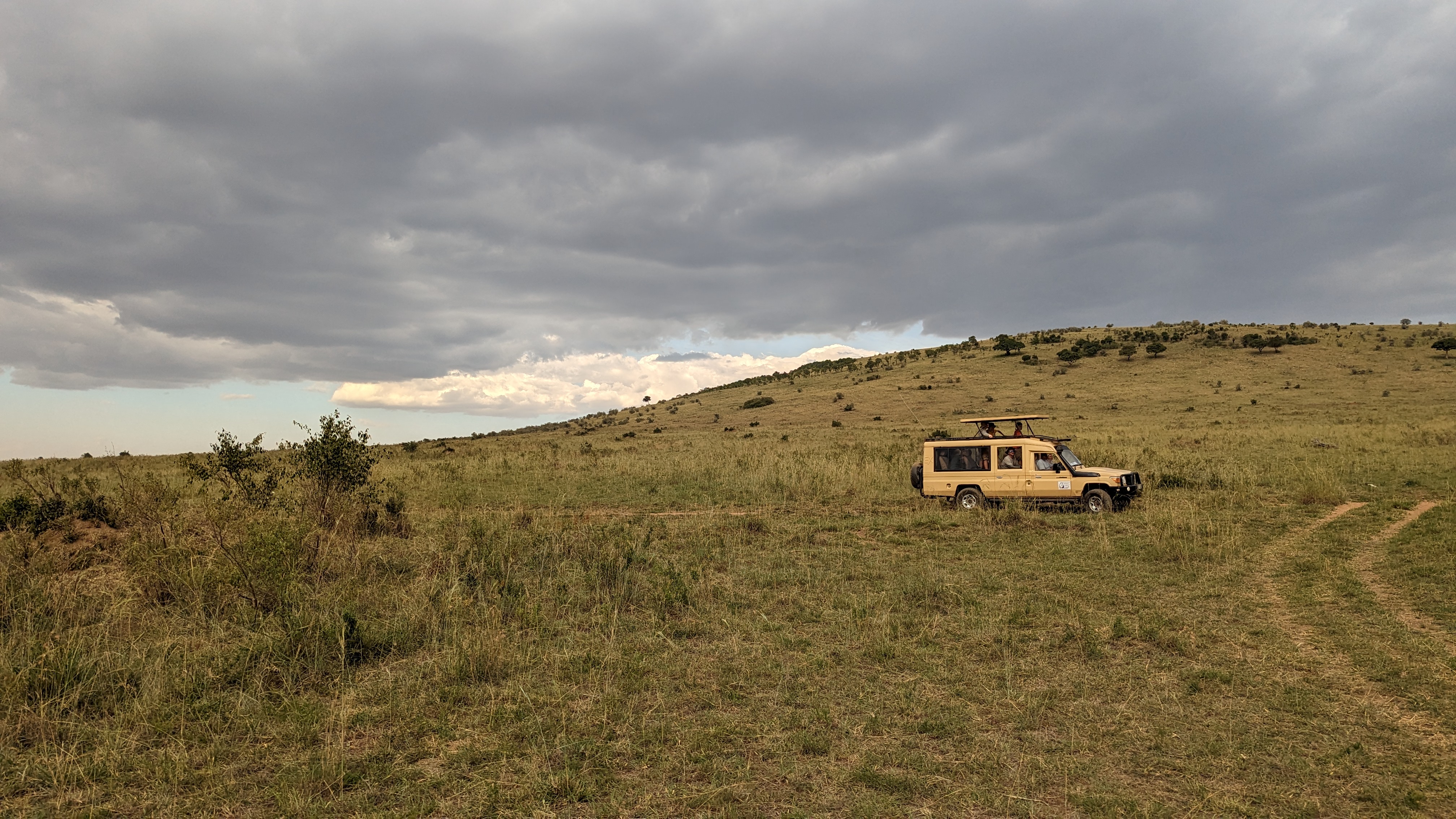
Until you approach an embankment beholding two majestic lionesses gracefully resting in its shadow.
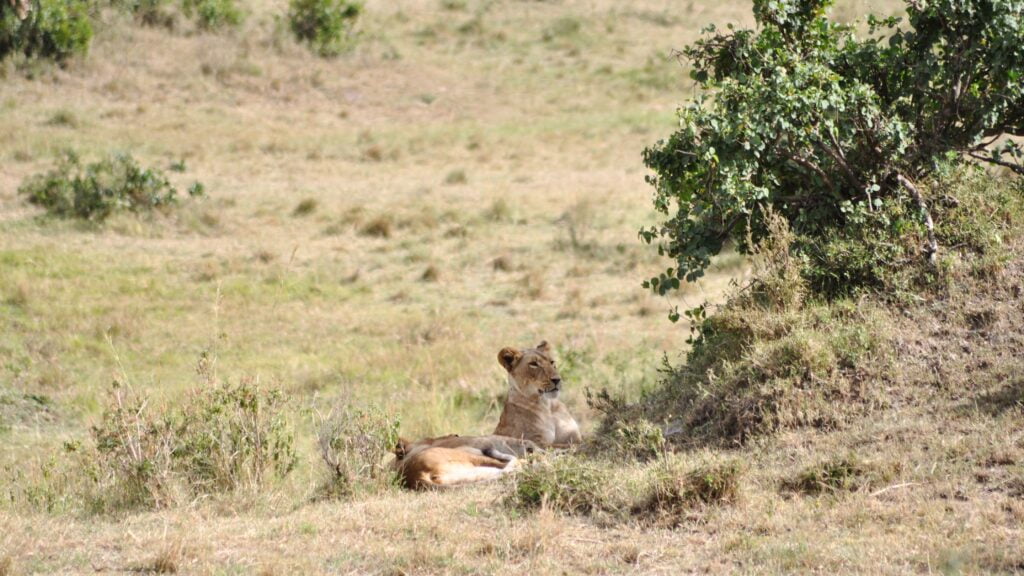
While one remains undisturbed, peacefully napping, the other gracefully moves to a vantage point, ready to commence its grooming ritual. With ample opportunity to observe, pure bliss envelops us 😍
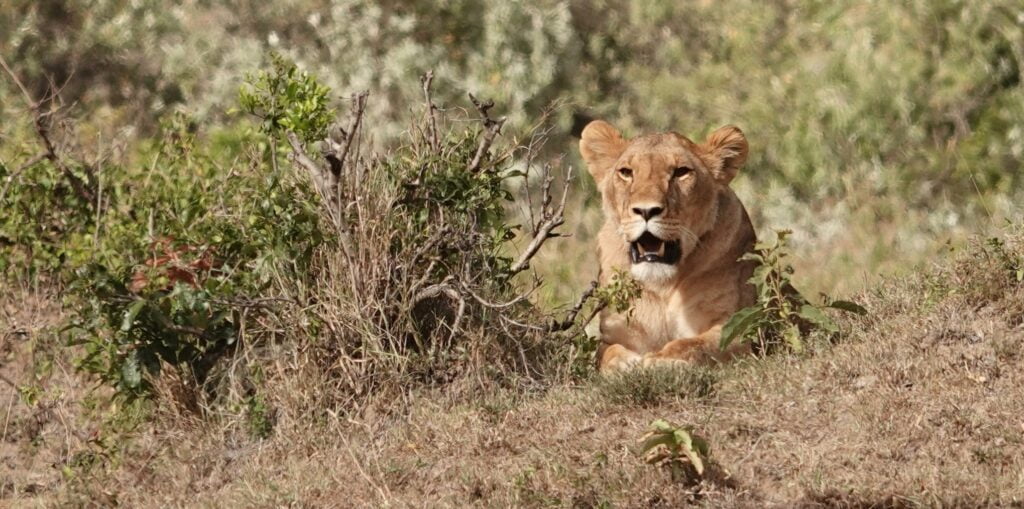
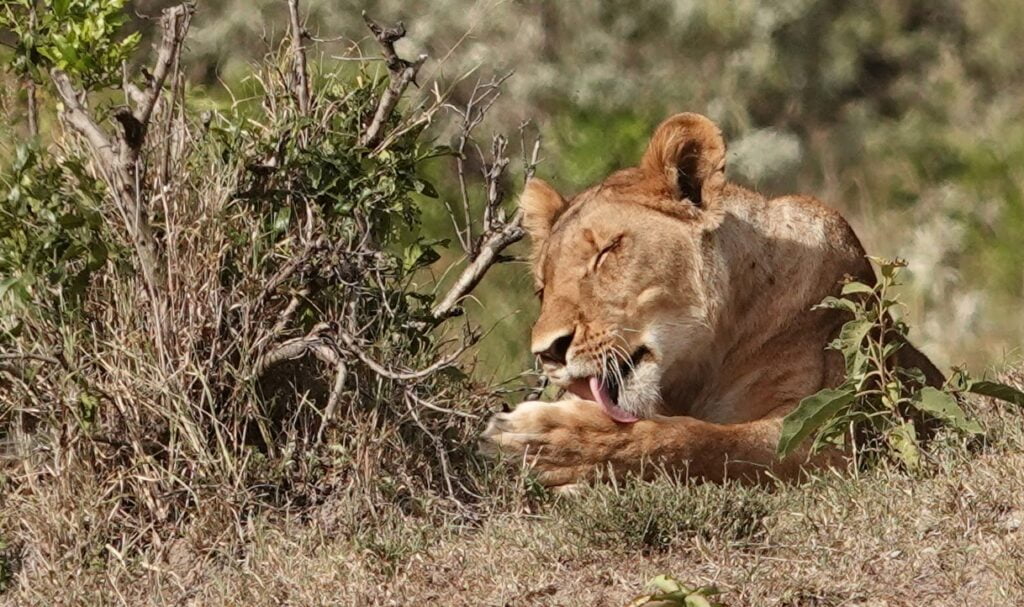
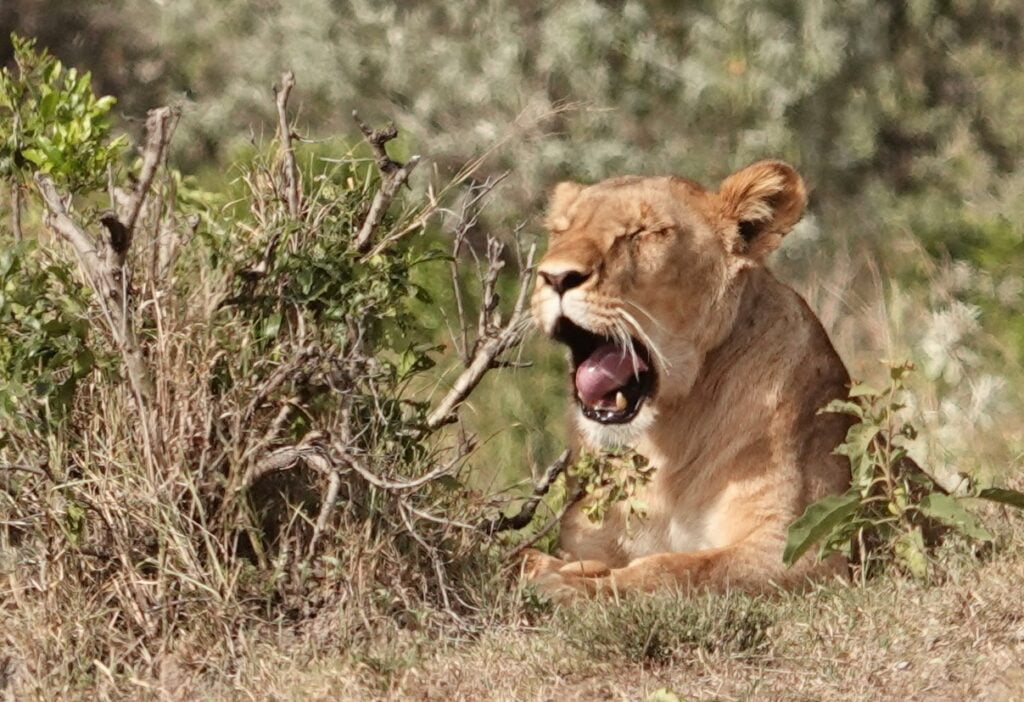
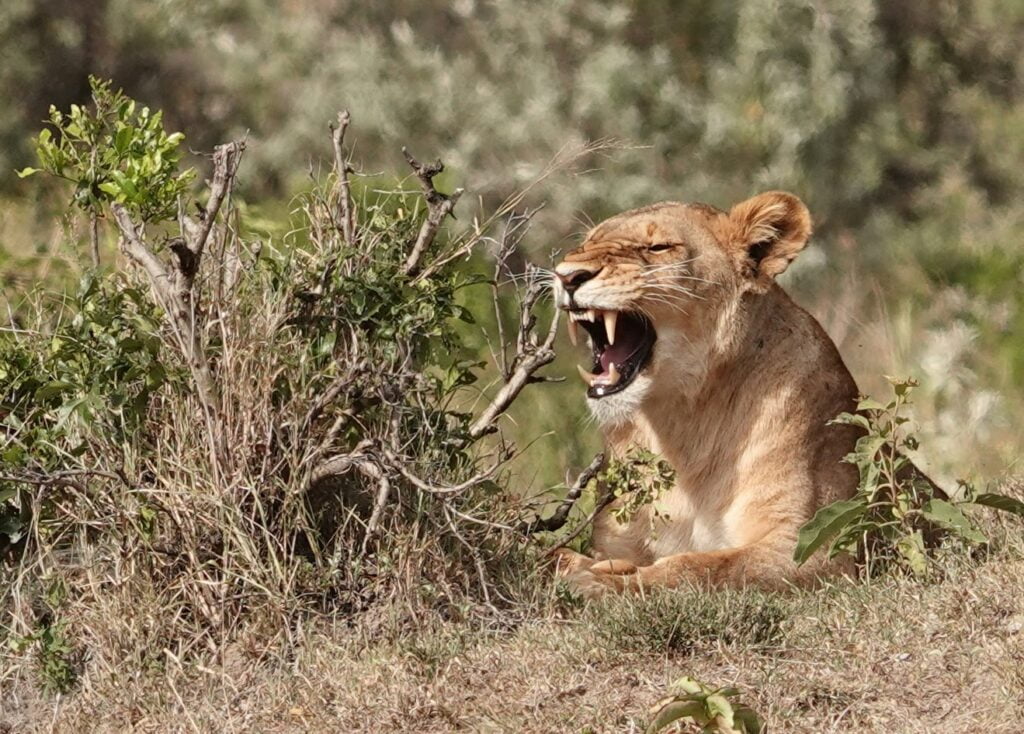
It is hard to resist spending the afternoon observing such a spectacle, but we venture deeper into the hills in search of Simba. We cross one last stream before having to turn back …
First, the silhouette of a majestic male elephant emerges on the horizon atop the hill. Then, right in front of us, a mother elephant graces our presence, accompanied by her three adorable offspring.
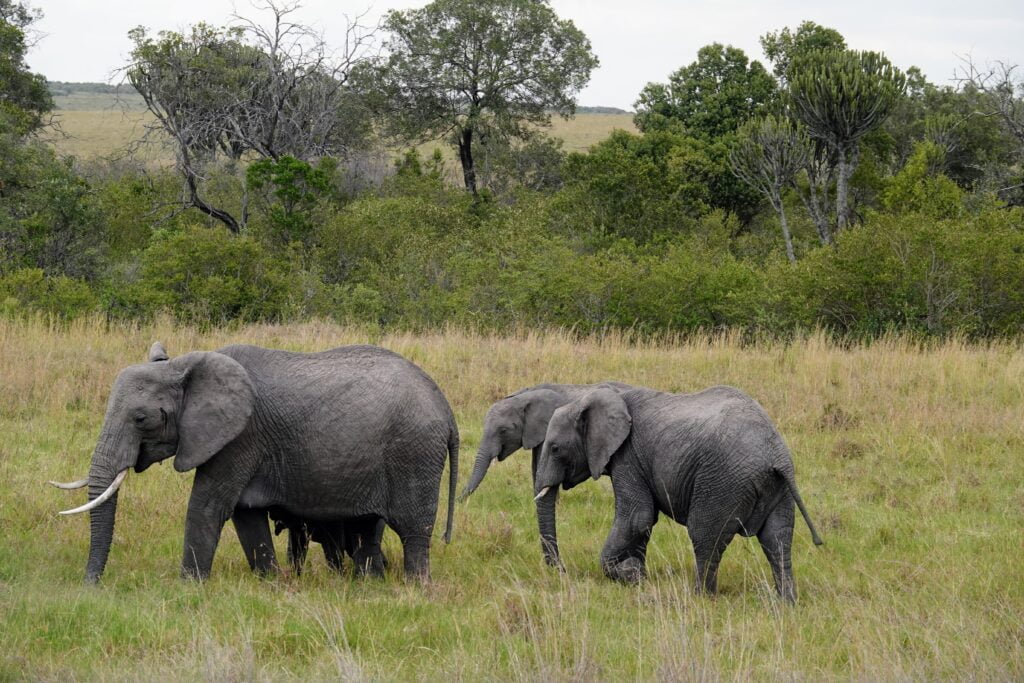
The youngest one stays close to his mother, who is still nursing. The two older ones move ahead leisurely without venturing too far.
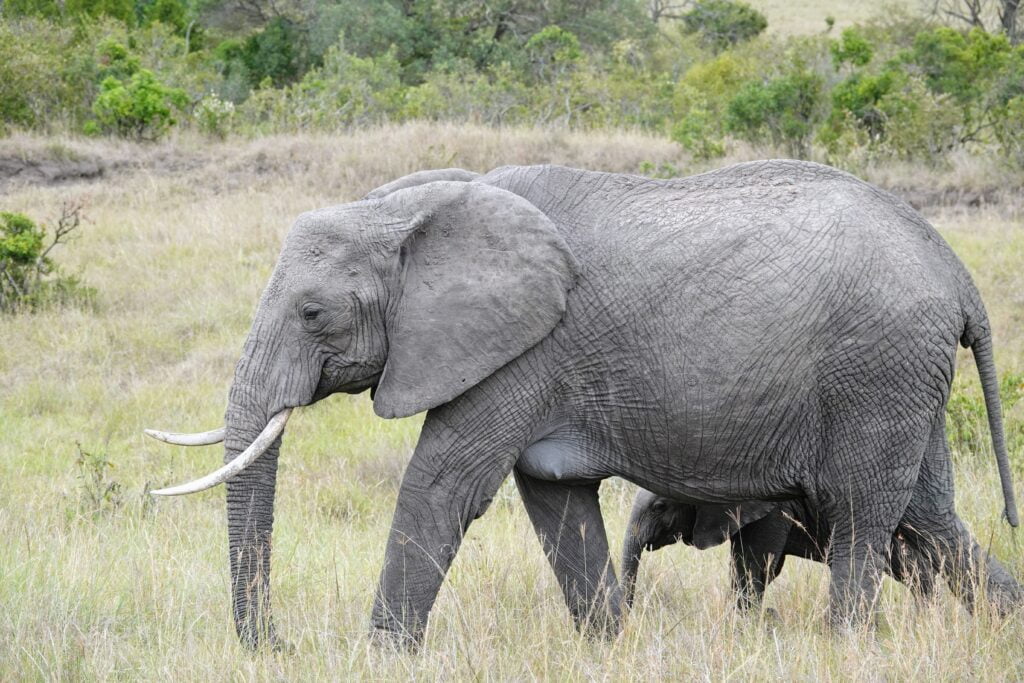
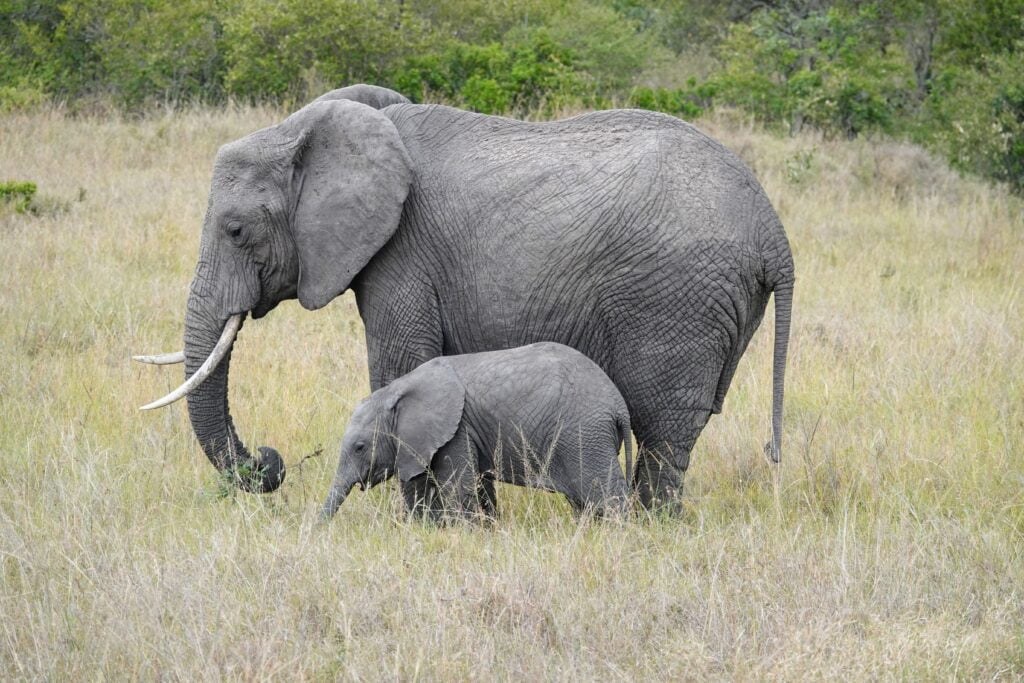

After a gestation period of 22 months, one of the longest among terrestrial mammals, a mother elephant establishes a profound bond with her baby, who will remain under her protection for several years. Nursed for approximately two years, the elephant calf stays close to its mother to learn and grow until it becomes sufficiently independent to fend for itself.
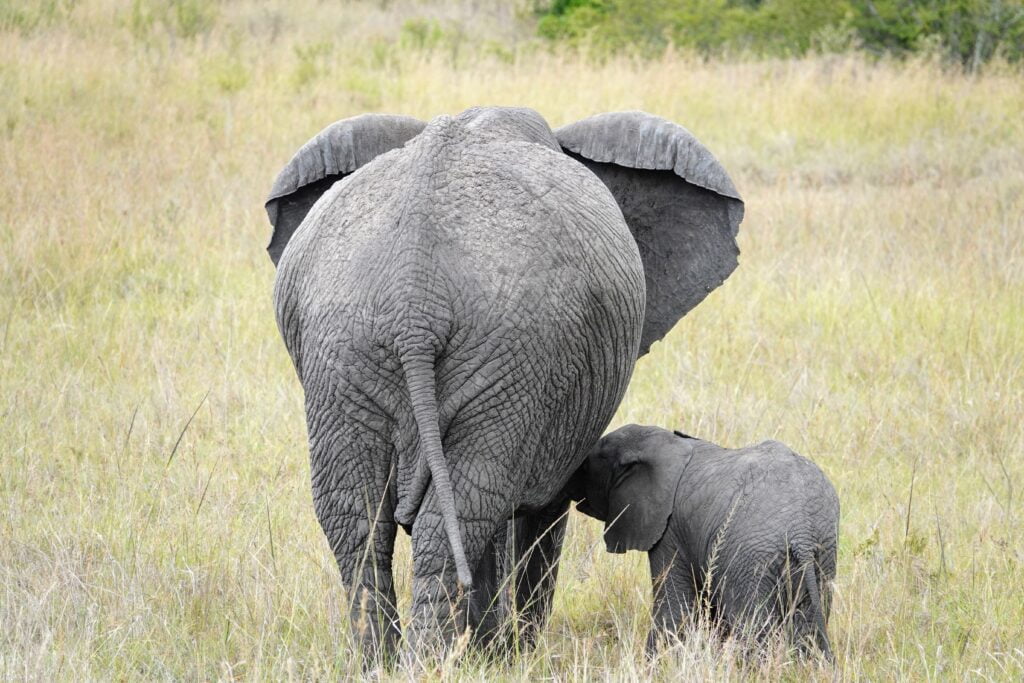
Observing this mother and her baby elephant, we can feel the deep bond that unites them. The sight of this majestic matriarch transports and deeply touches us 😍
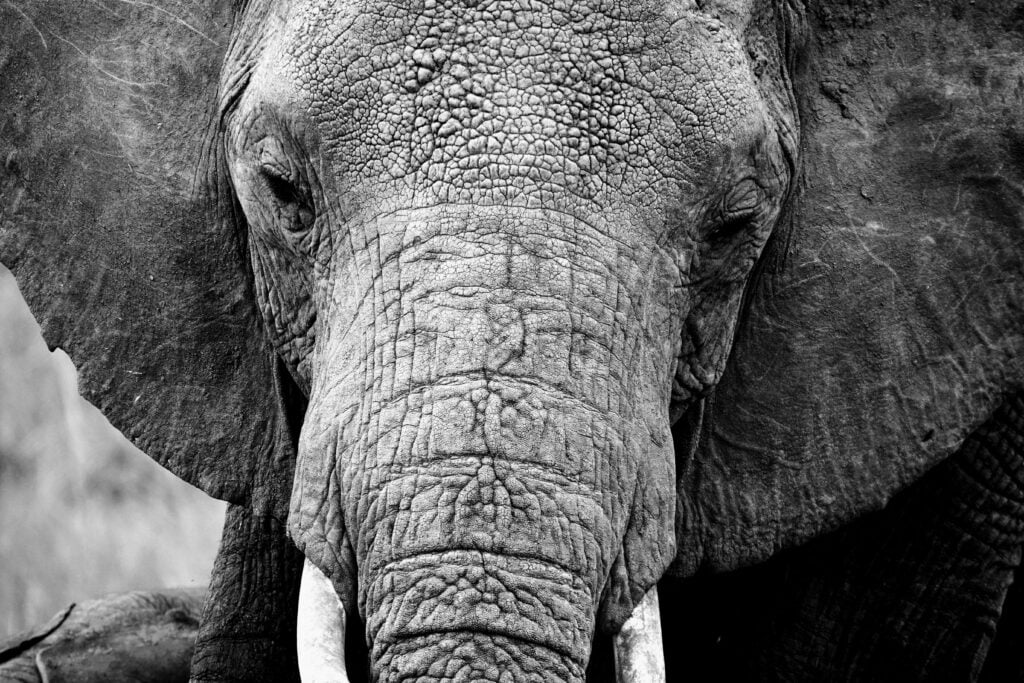
One can barely notice the male drifting away, casually passing by a giraffe engrossed in feeding among the acacia trees.
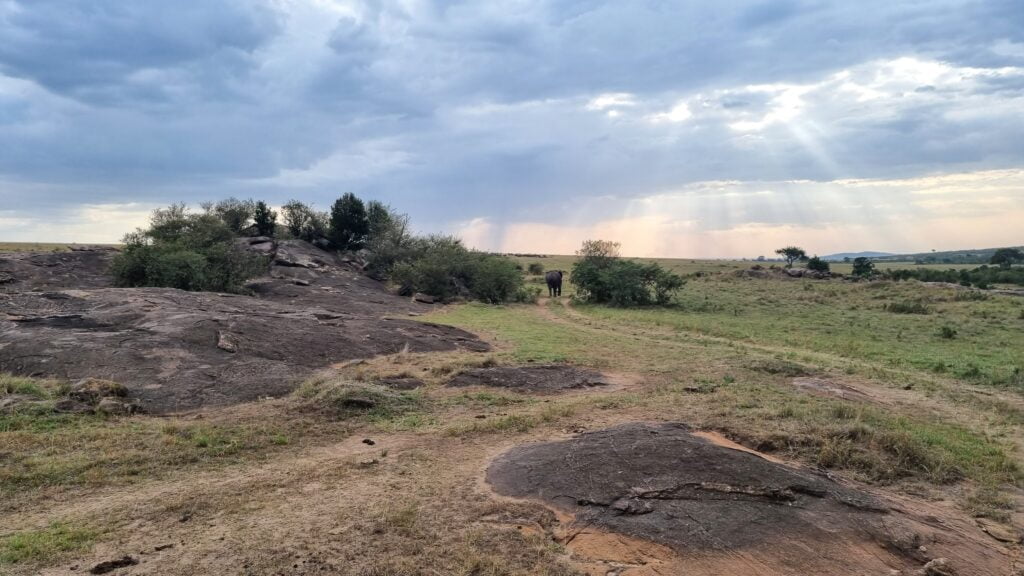
The light softly fades away, and we wish to linger with Big Mama and her young elephants. But the reserve gates will soon shutter; it is time to turn back.
To our right, a hyena stealthily emerges from the bushes. It swiftly crosses in front of us, headed towards the hill. Towards an immense herd of buffaloes!
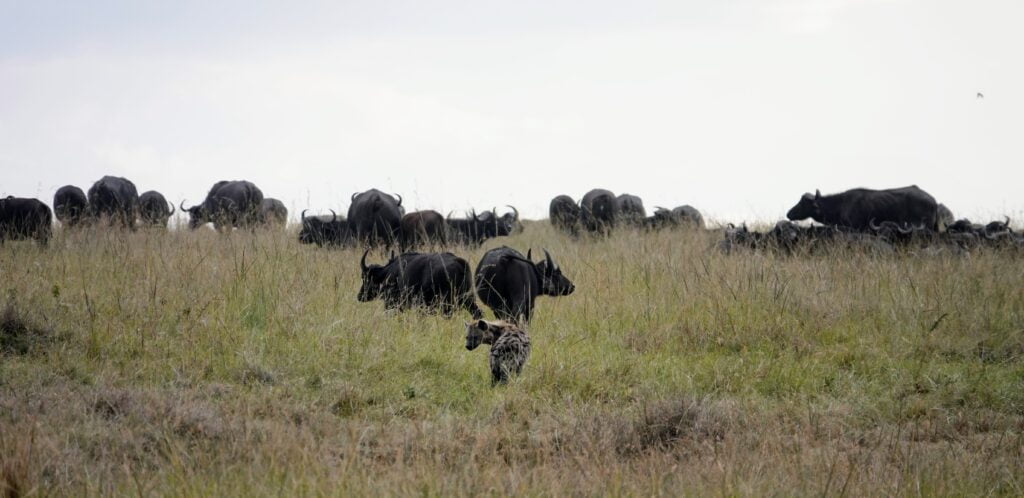
Watching her progress alone raises questions about her intentions. Clearly, she does not have the stature to take on a buffalo. Could she be scouting for other hidden hyenas nearby? Or has she sensed an injured animal?
Lost in our assumptions, eyes fixed on the hill, barely noticing what is unfolding behind us … Silently emerging from the ravine, a pride of lions is approaching!
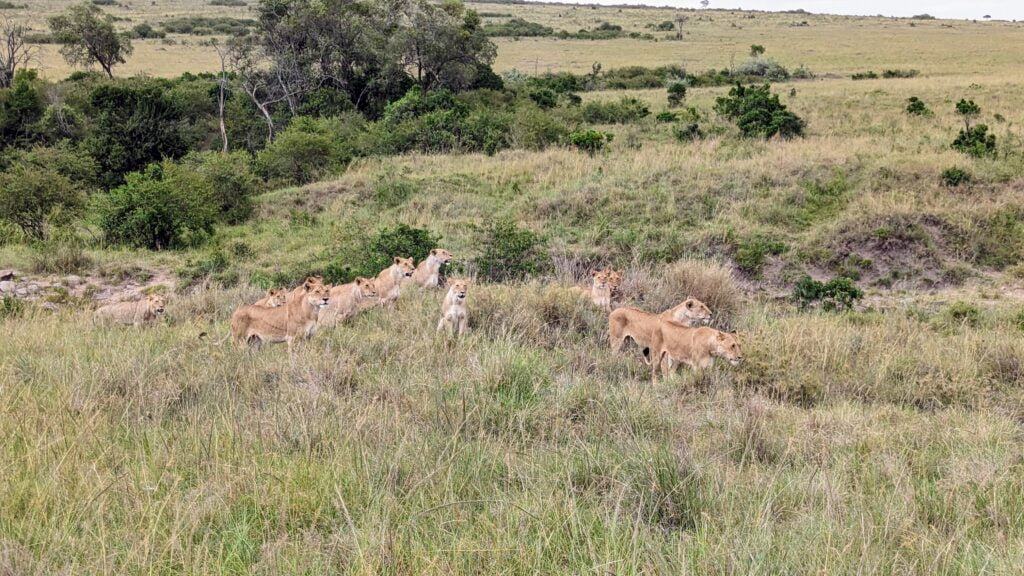
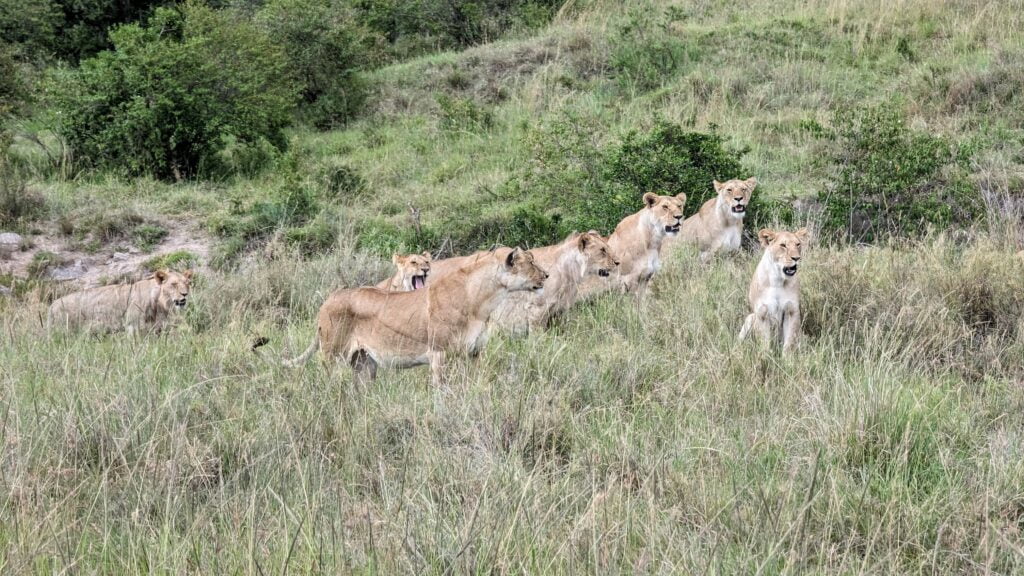
The pride is truly impressive, with a staggering count of at least 13 lions, each emanating regal grace. The lionesses showcase formidable muscular strength, while several young males flaunt their slender manes. Unusually, one of them even displays distinct markings on its coat.
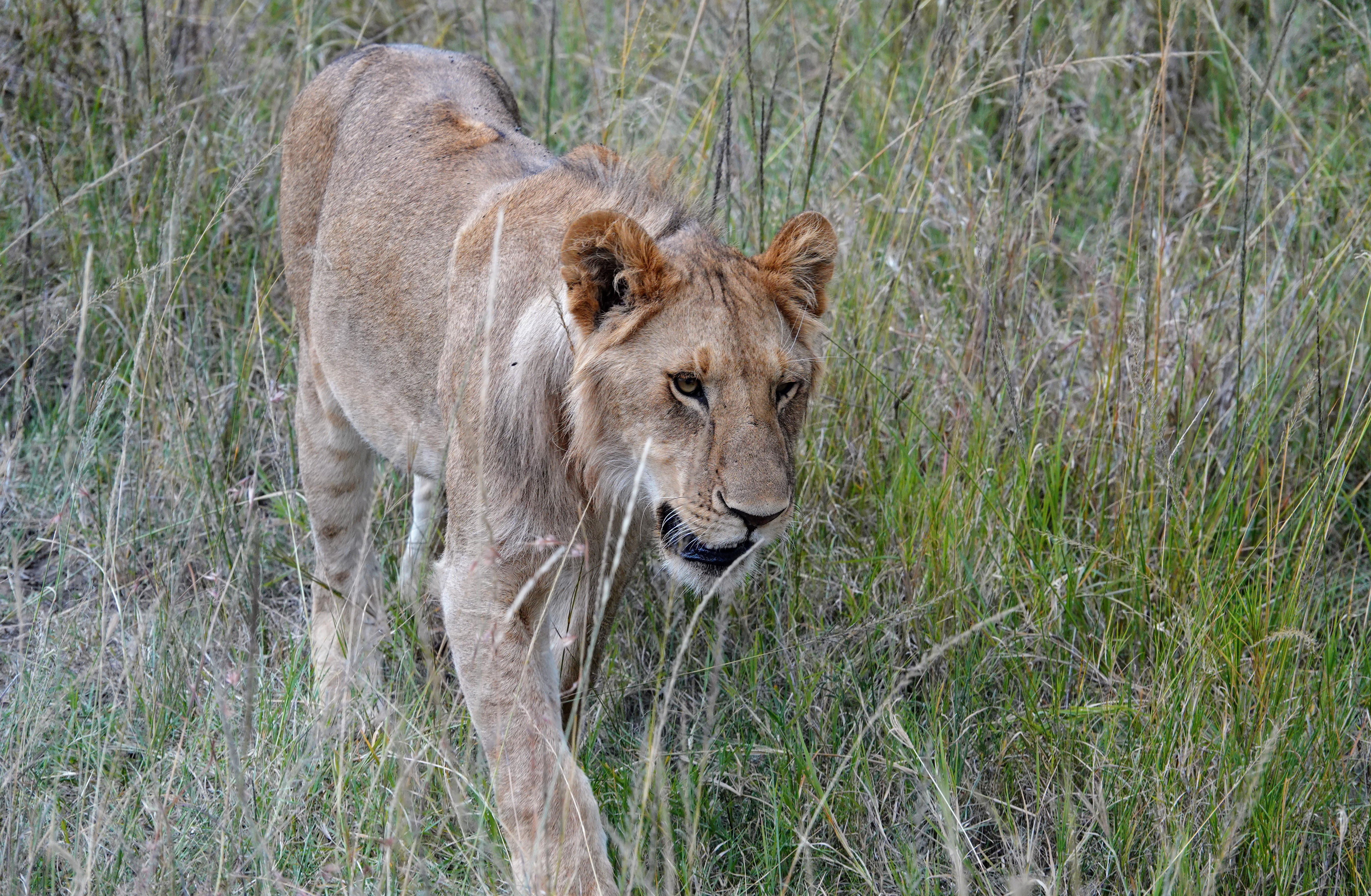
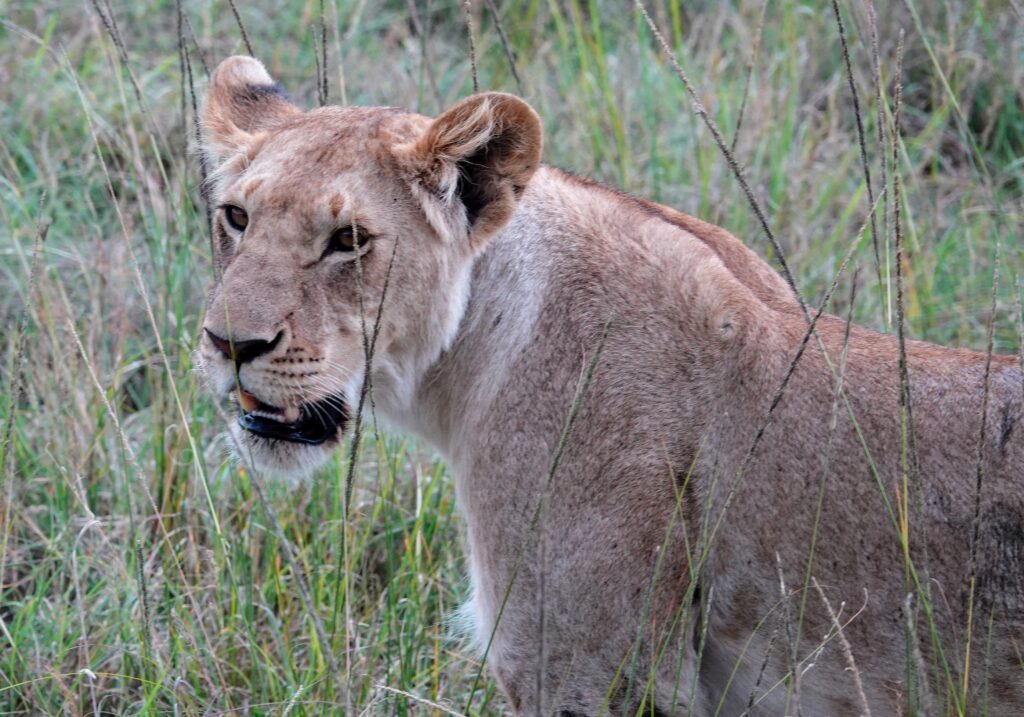
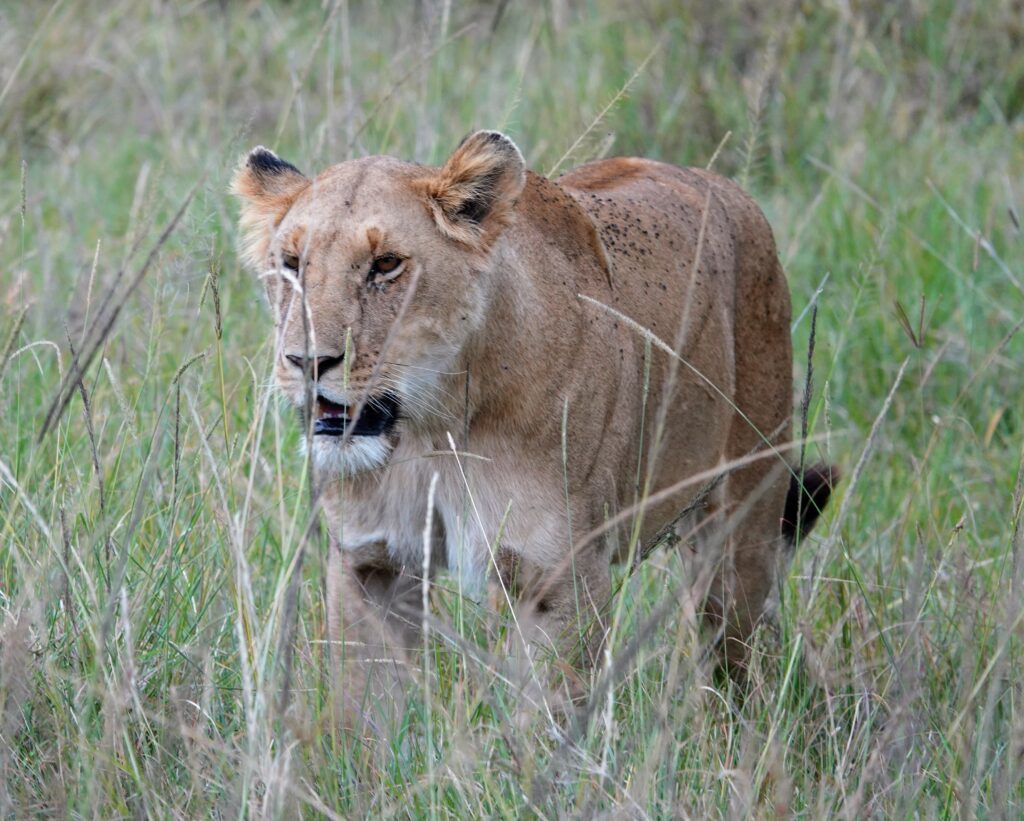
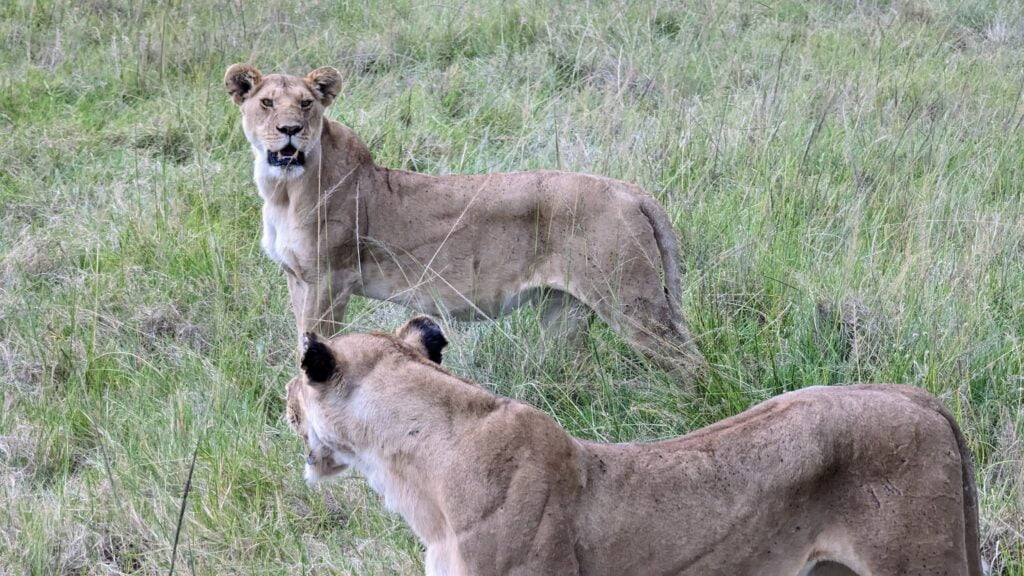
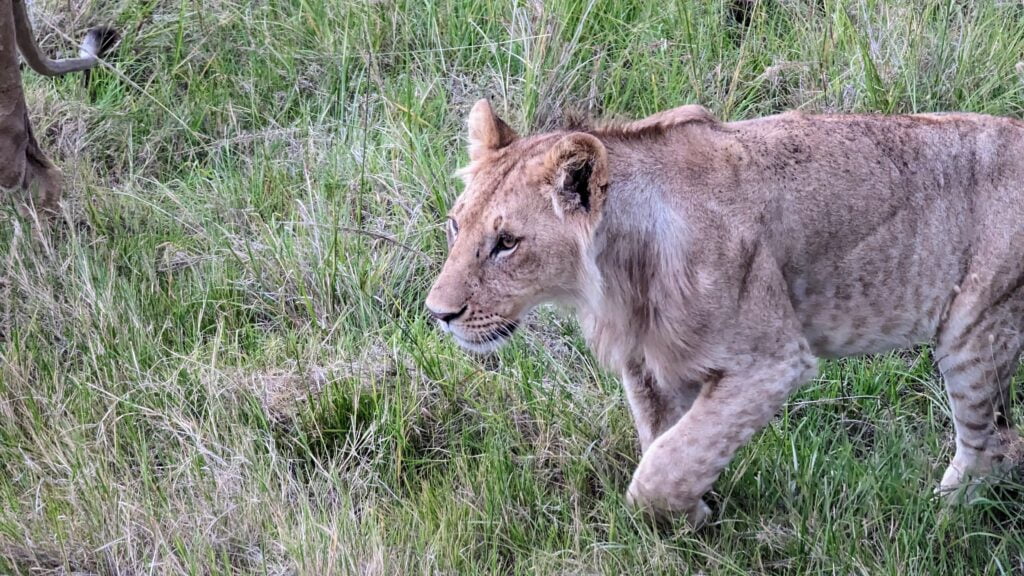
The scene is surreal, especially considering that we are alone now and no car will be able to reach us so close to the reserve closing time. We find ourselves amidst a pride of lions. Even our guides take out their phones to capture this unexpected encounter, preserving it forever.
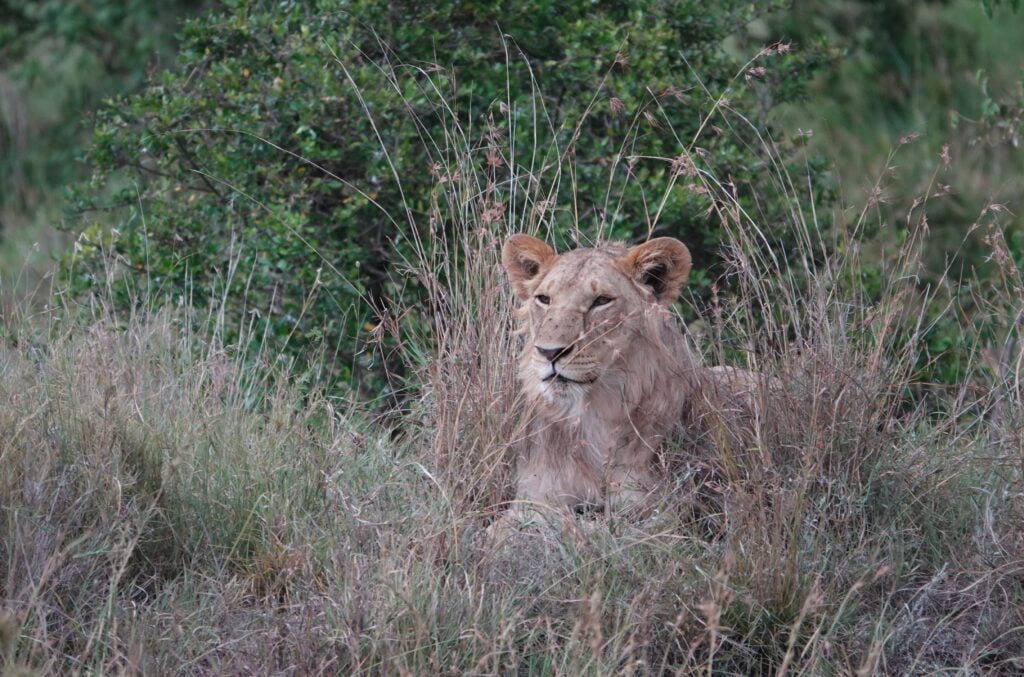
The air is thick with tension, an intense hunt underway. The lions, seemingly nonchalant, move gracefully amidst the vehicles, barely acknowledging our presence. With wide-open windows, it’s impossible to remain unaffected when we’re this close. Their intentions, always unpredictable, keep us on edge 😂
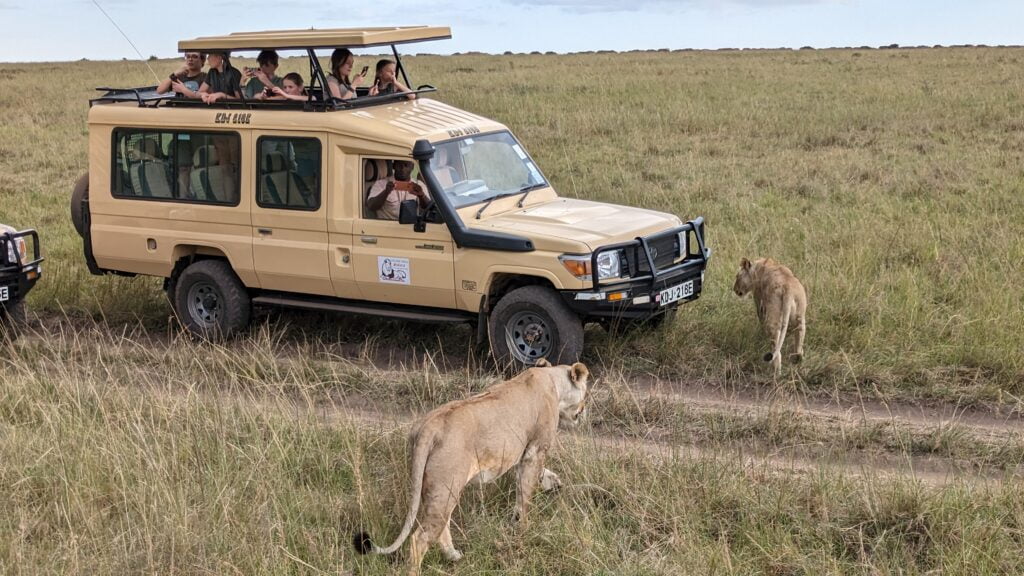
As minutes tick away, hope for action lingers in the air. The pride remains at a comfortable distance, finding solace amidst the towering grass. Alas, the hunt will not commence at this very moment.
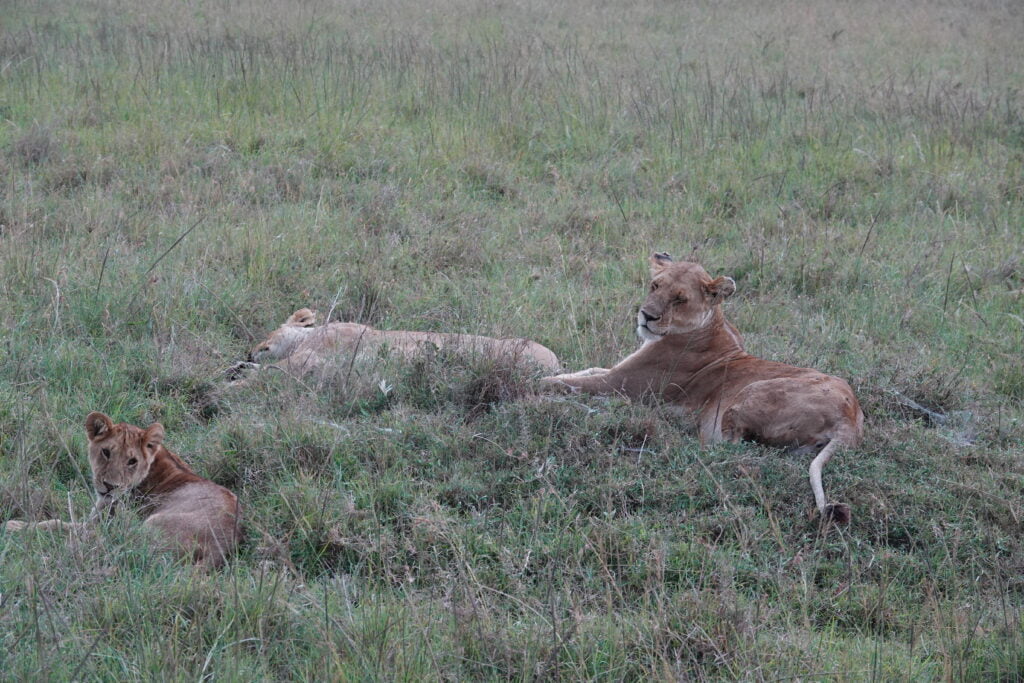
The guides leave us no choice but to embark on our journey toward the reserve gates. We take one last look, imprinting the memory of this magnificent encounter, and then we set off.
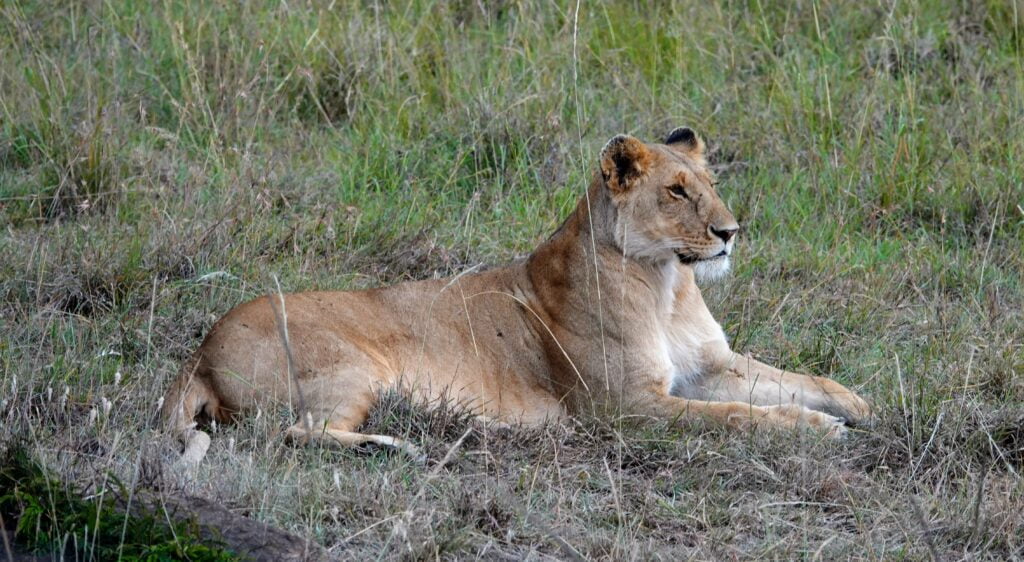
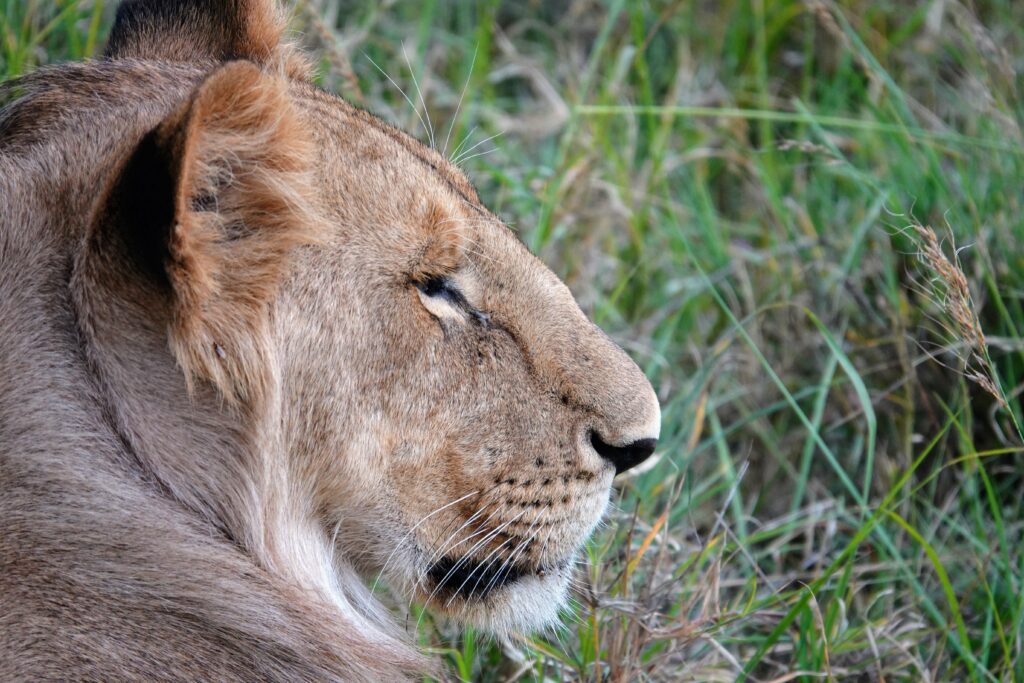
We steal a final glance behind us as we prepare to depart the valley. The buffalo herd appears serene, resting upon the hill. For now…
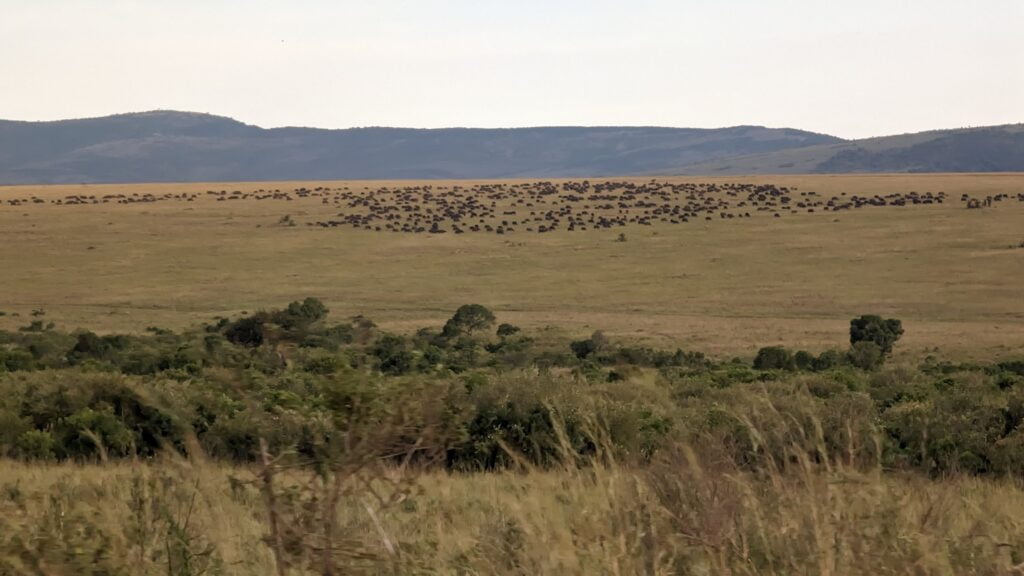
Returning to the camp is like floating on a cloud. We barely even notice the few raindrops brought by the storm… We pass the reserve gates a few minutes late after a far less comfortable journey than the morning 😅 But nothing can take away the stars we have in our eyes.
Tonight, during the aperitif, there will be discussions of lions and buffalo hunting. Most likely, these conversations will continue during the meal as well. And undoubtedly, around the campfire, with our guides and the Masai who guard the camp. Not every night one falls asleep after witnessing a pride of 13 lions 😍
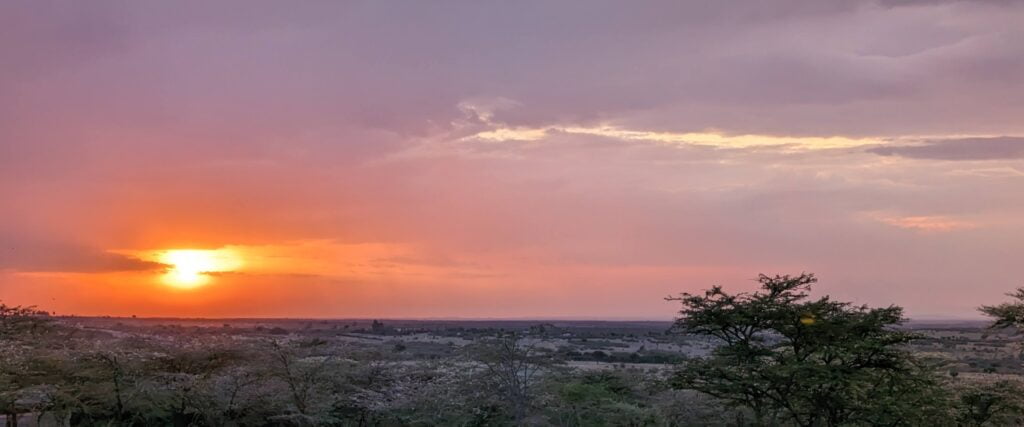
Helpful information
- The Masai Mara Reserve entrance fee is $100 per day for non-resident adults ($50 for children aged 9-17), increasing to $200 per day starting July 1, 2024. Only credit card payments are accepted.
- You can purchase entry tickets through the reserve’s website. Remember to print the proof of your transaction!
- Current regulations in the reserve are as follows:
- Walking within the boundaries of the Masaï Mara reserve is strictly prohibited.
- Vehicles can operate at reduced speeds (maximum of 50km/h) between 6 am and 7 pm.
- It is prohibited to exit a vehicle except at designated observation points.
- When approaching animals, it is important to minimize noise as much as possible.
- A maximum of five vehicles are allowed near the animals.
- Feeding animals is strictly prohibited.

